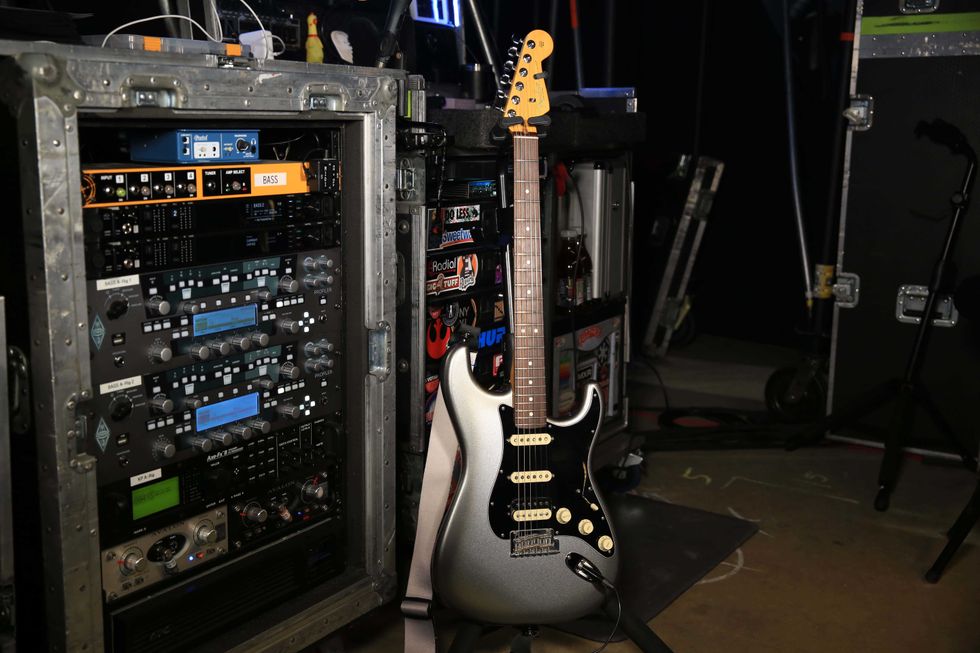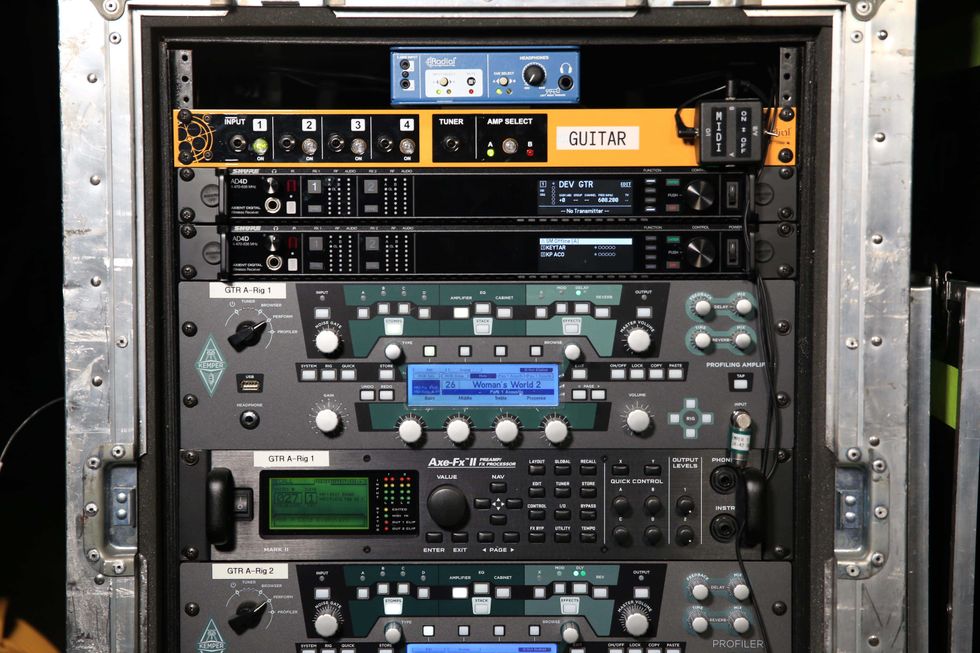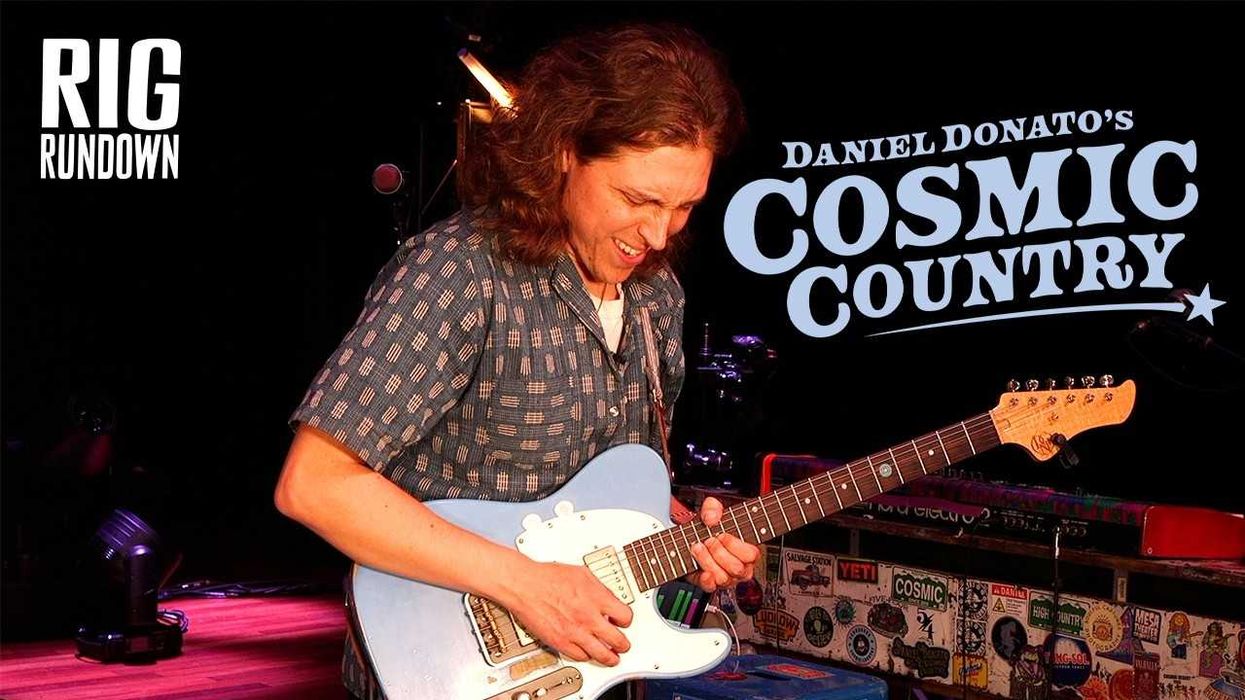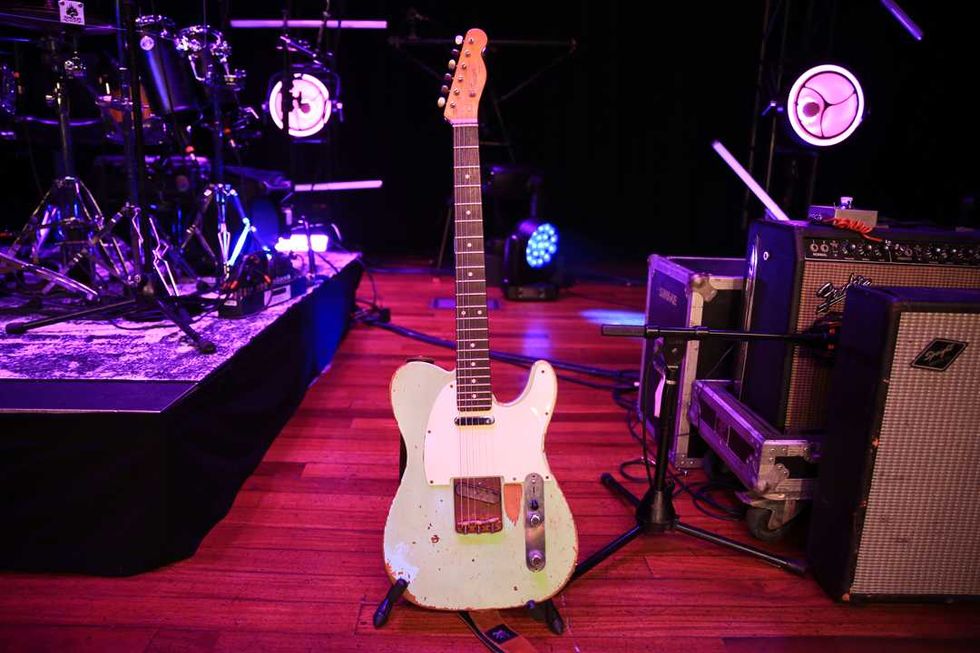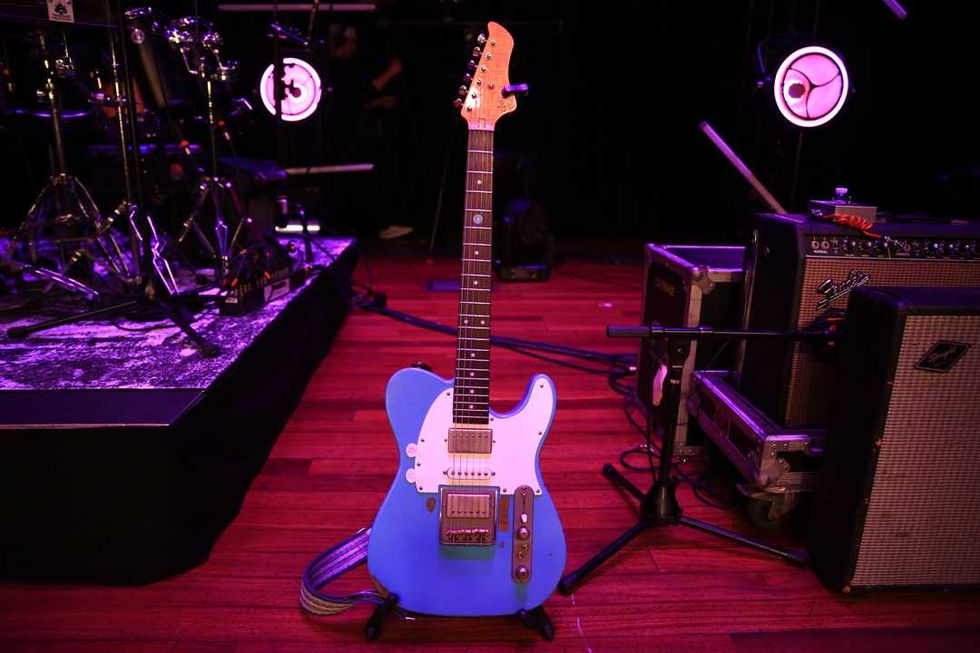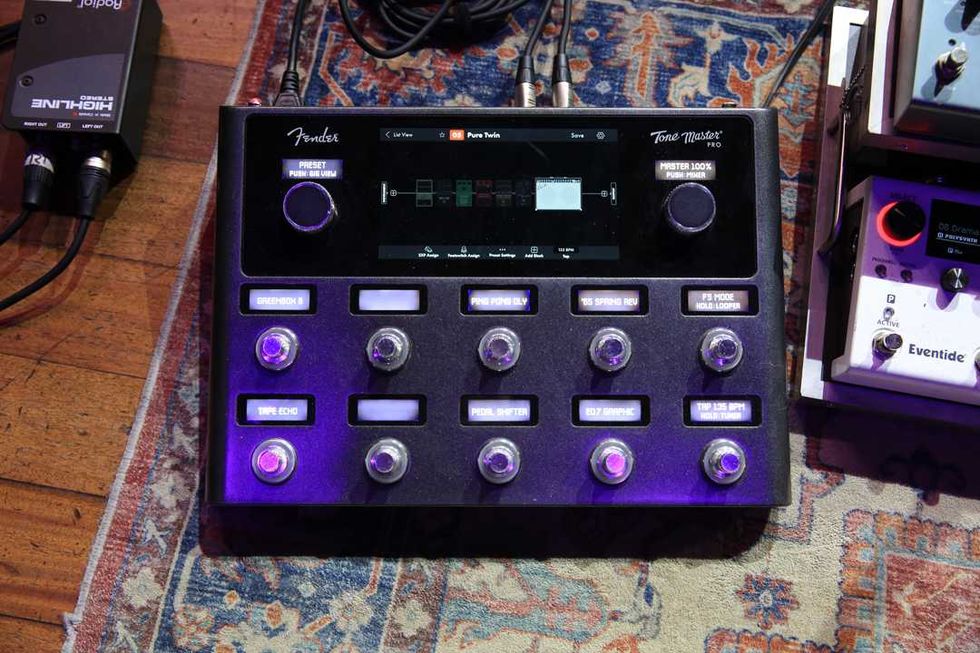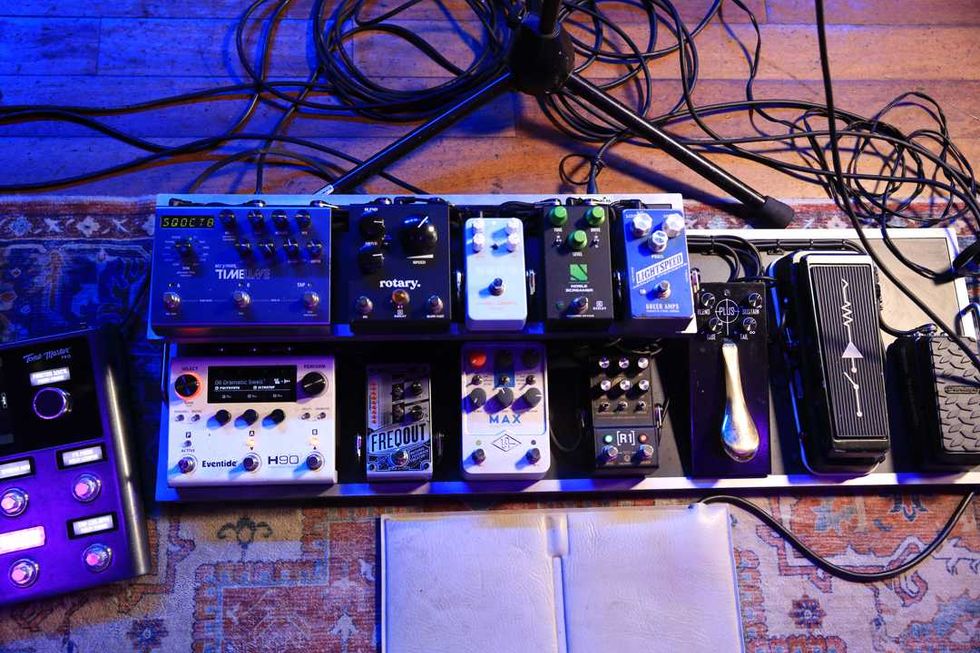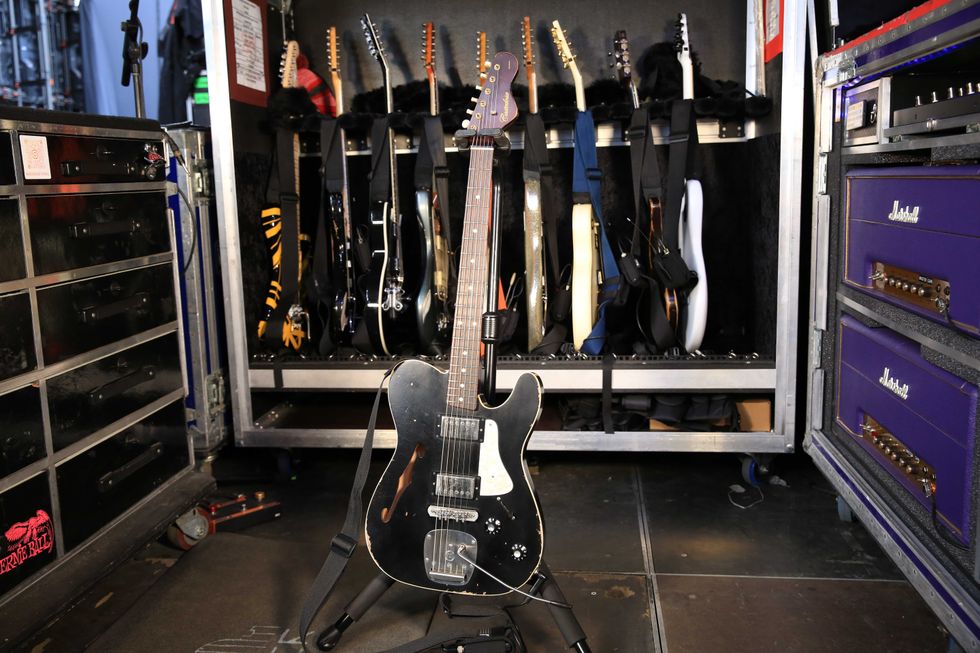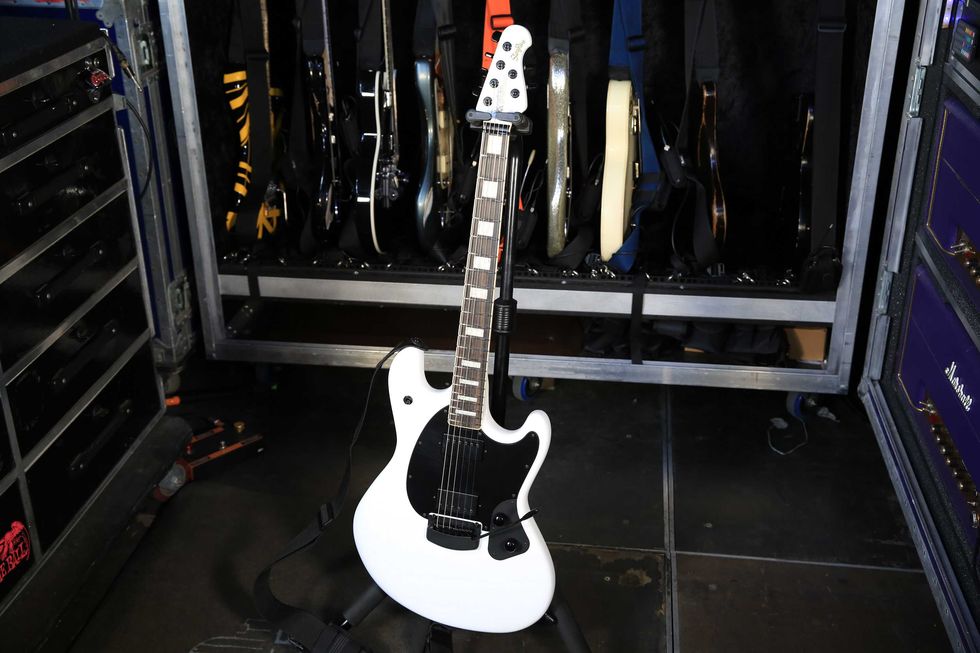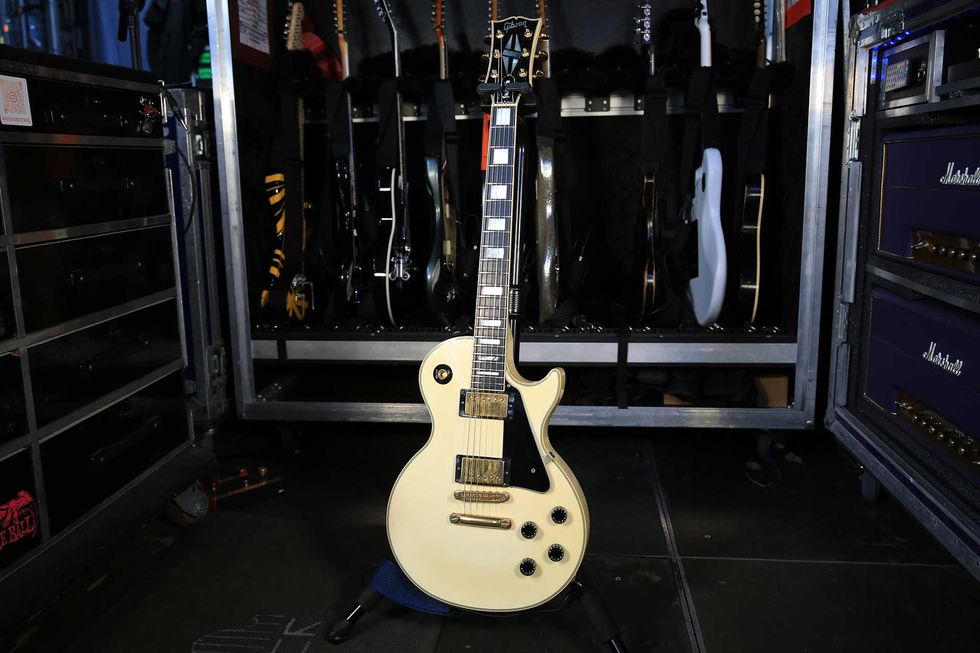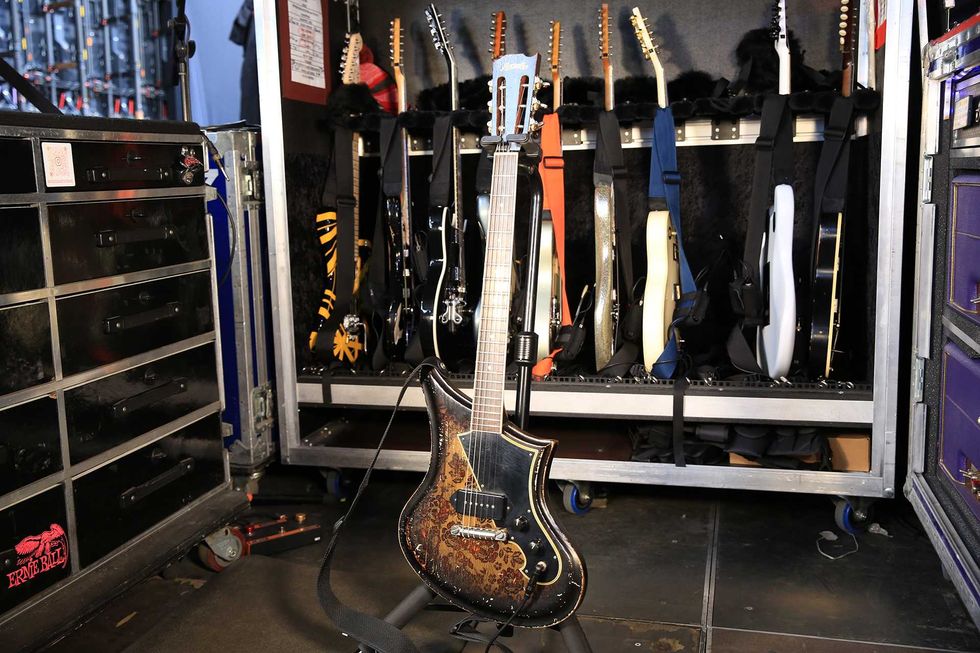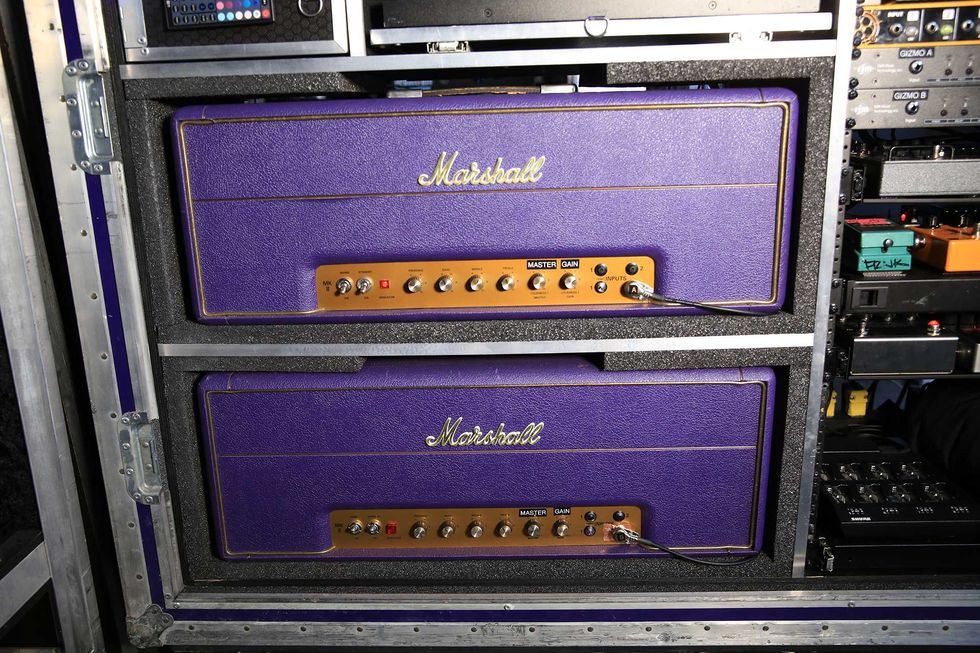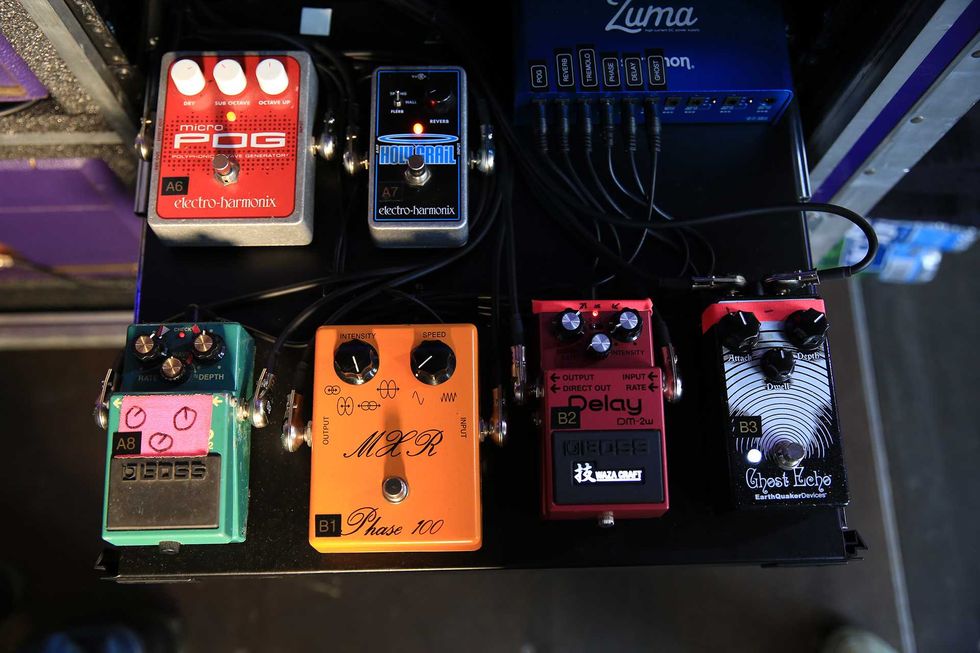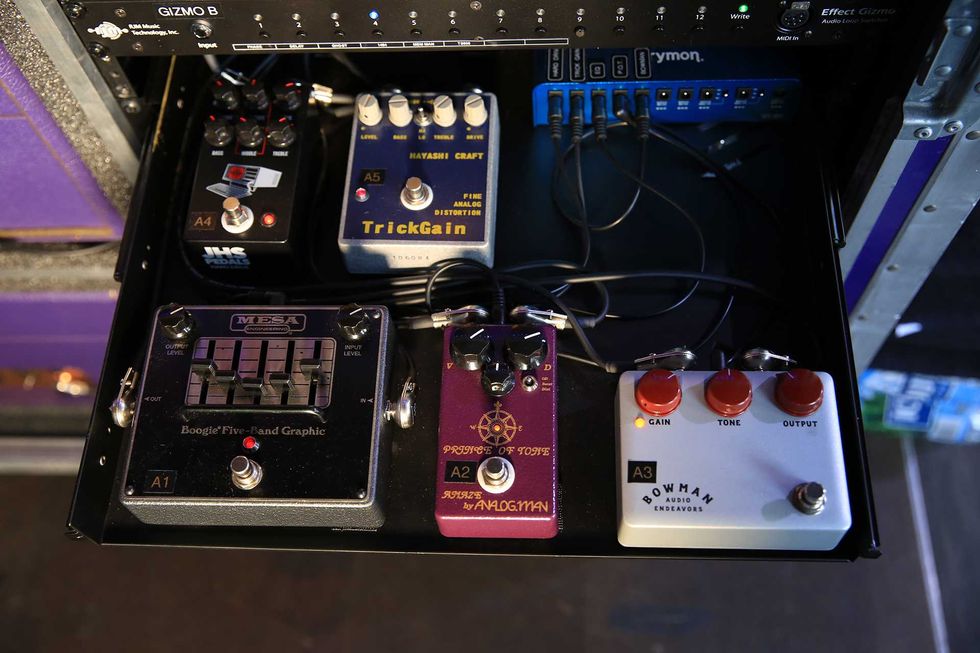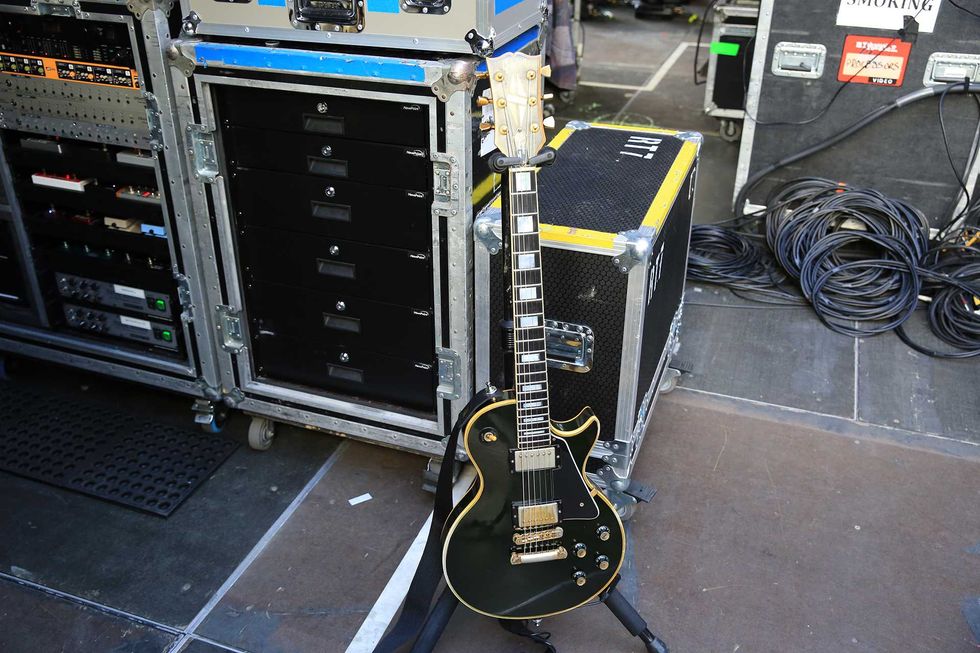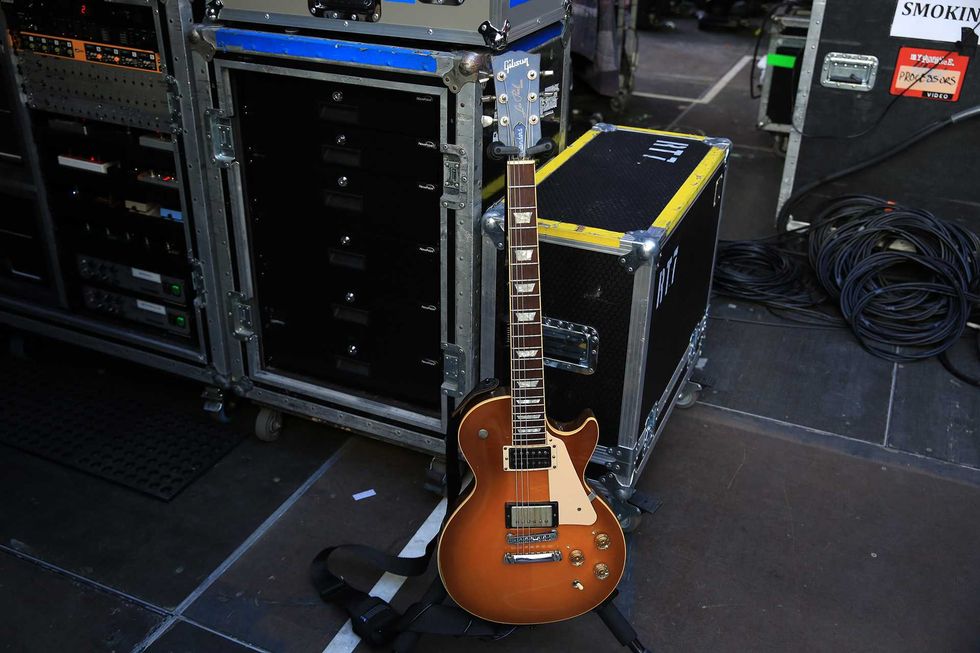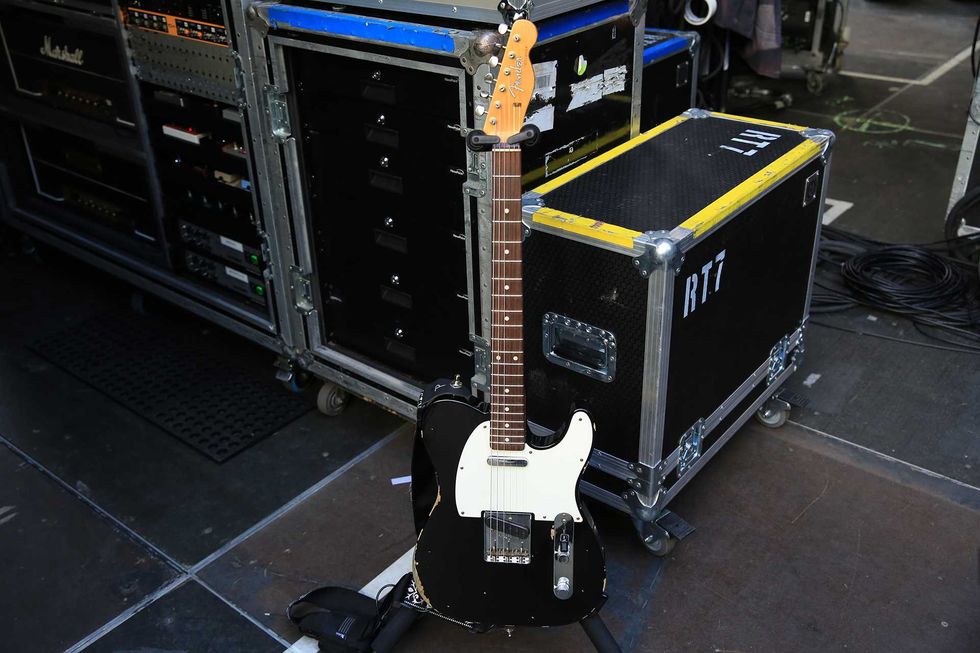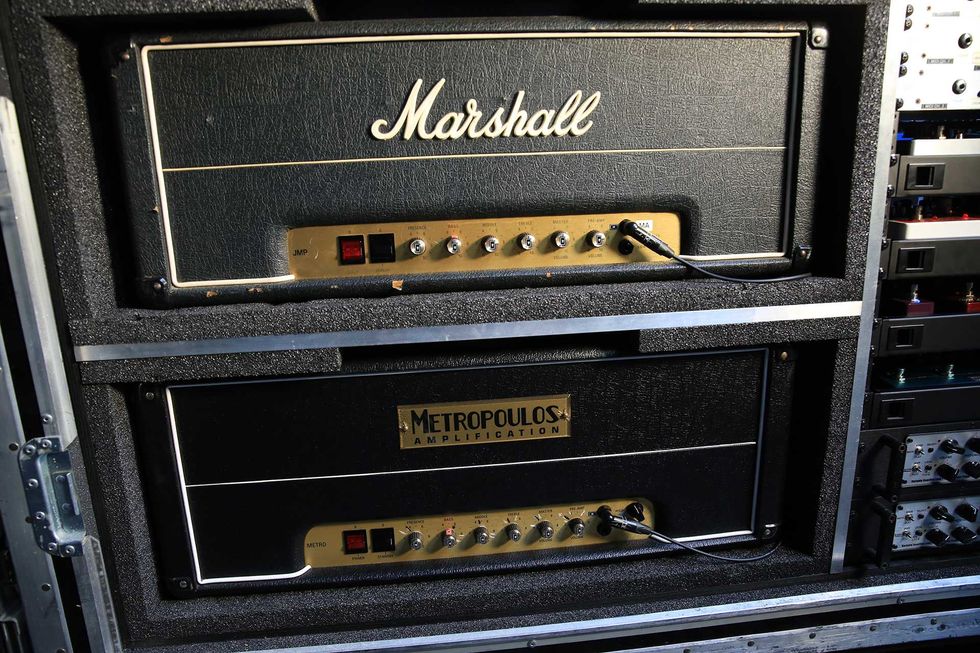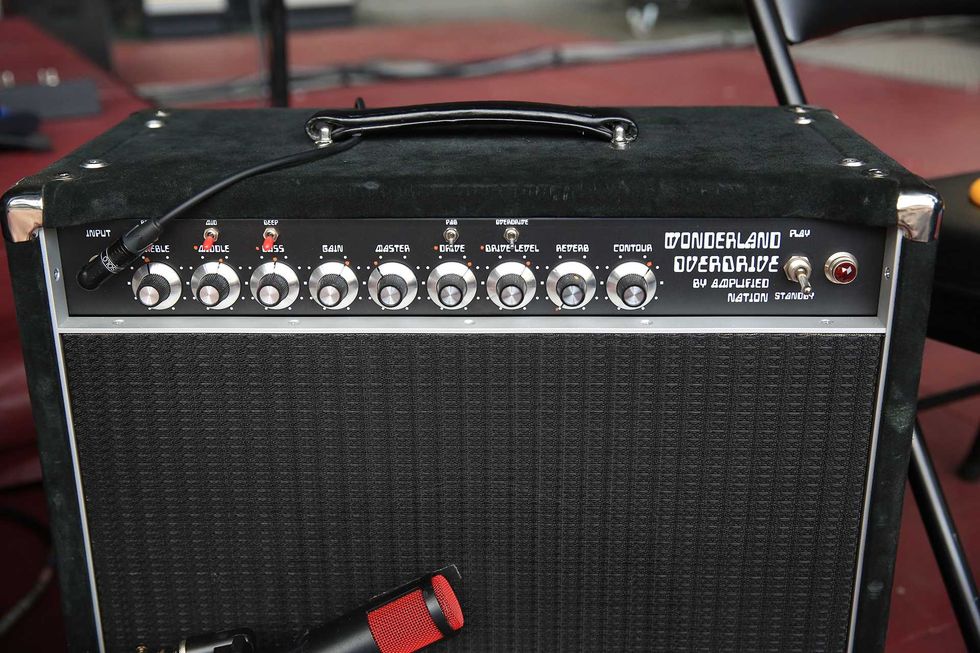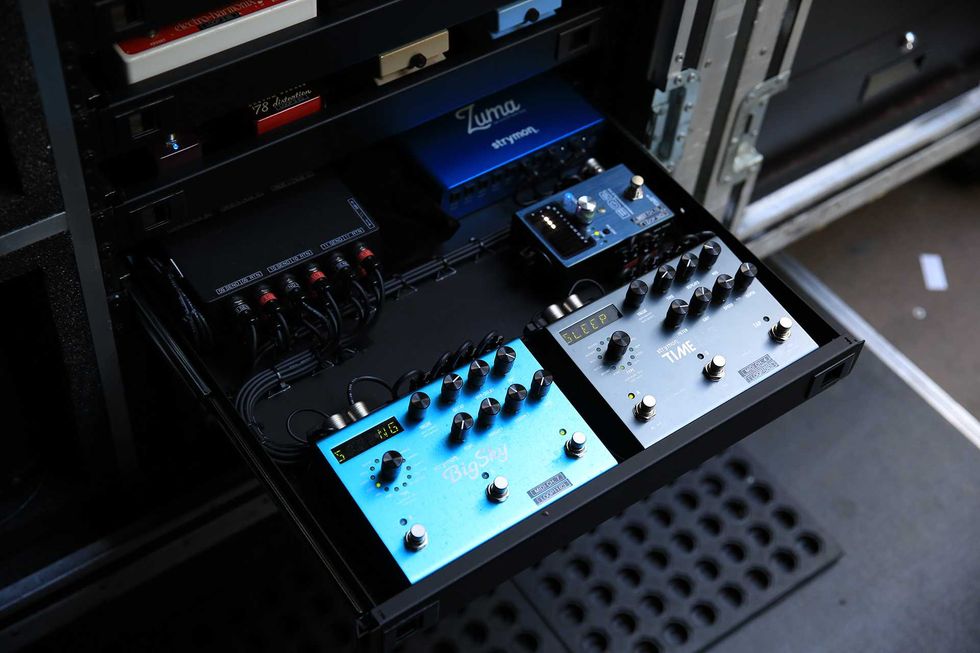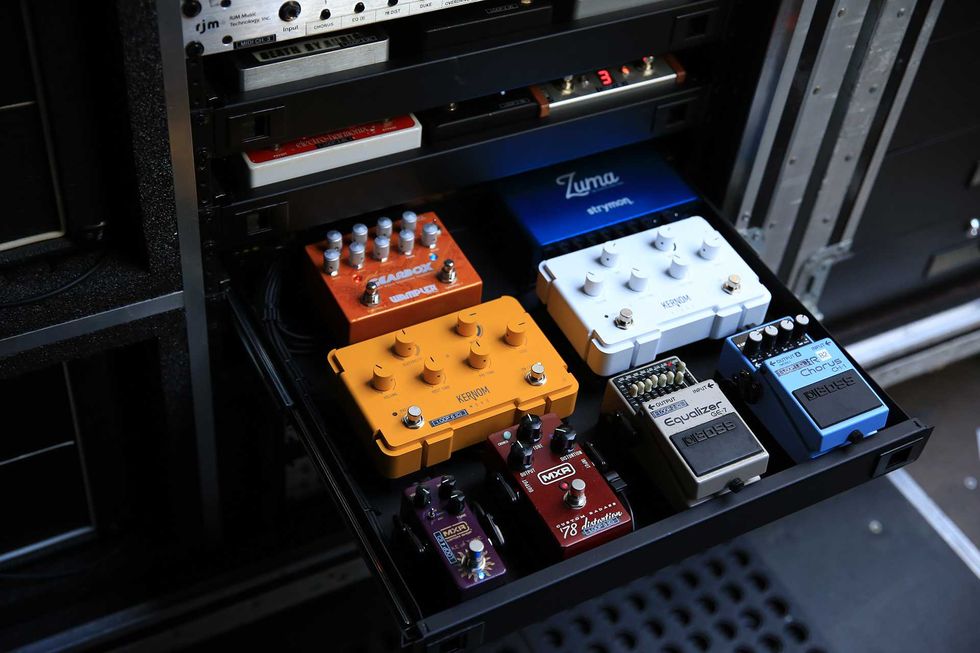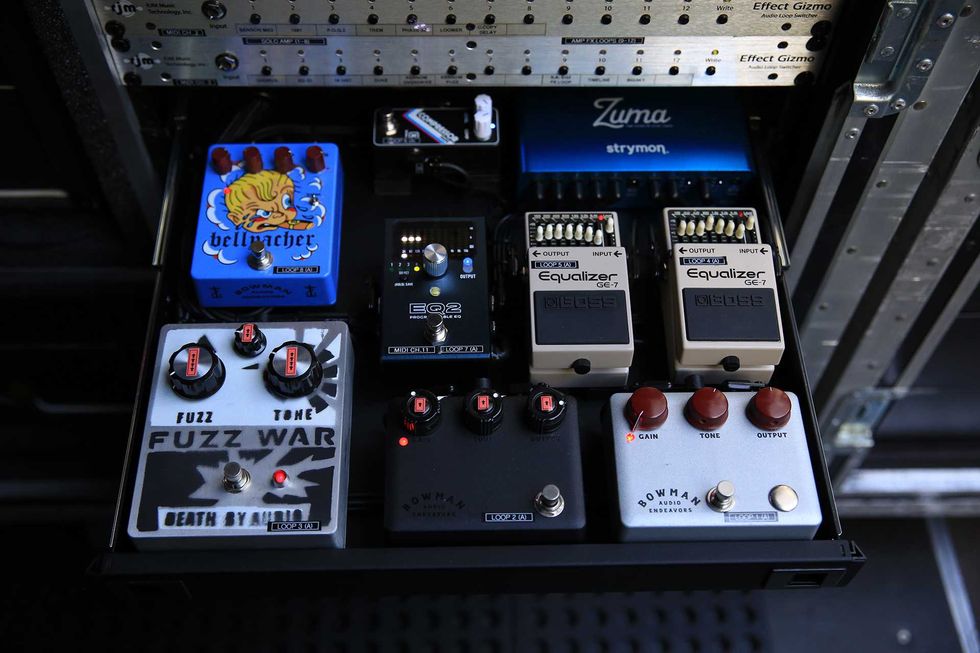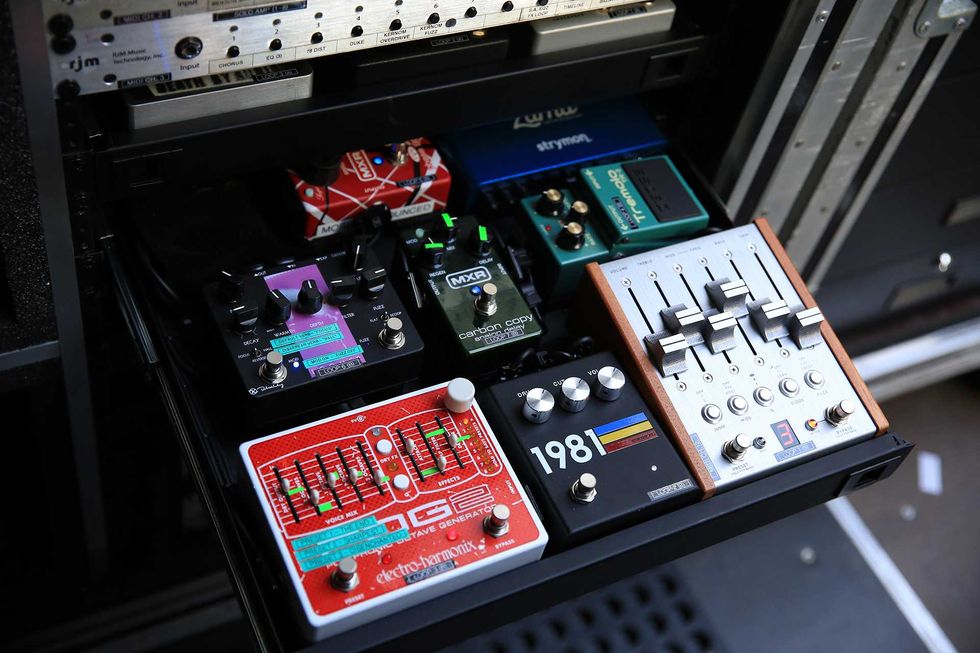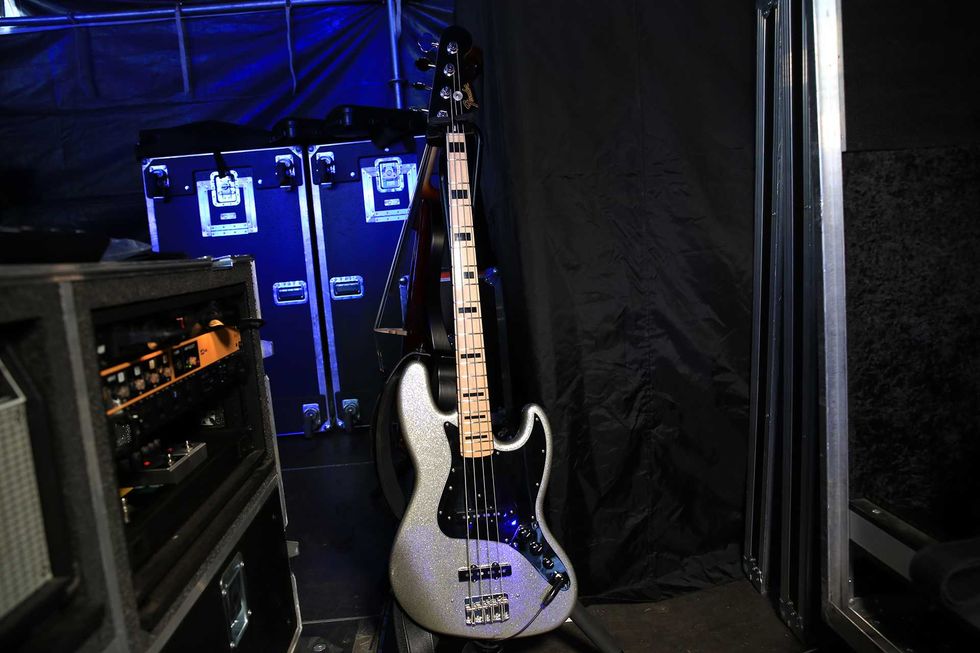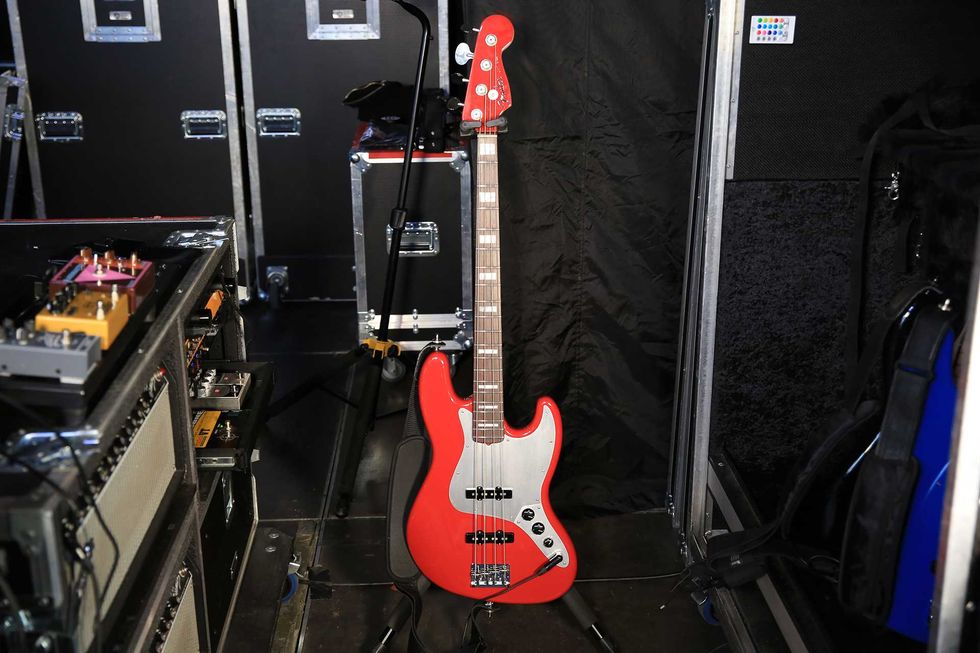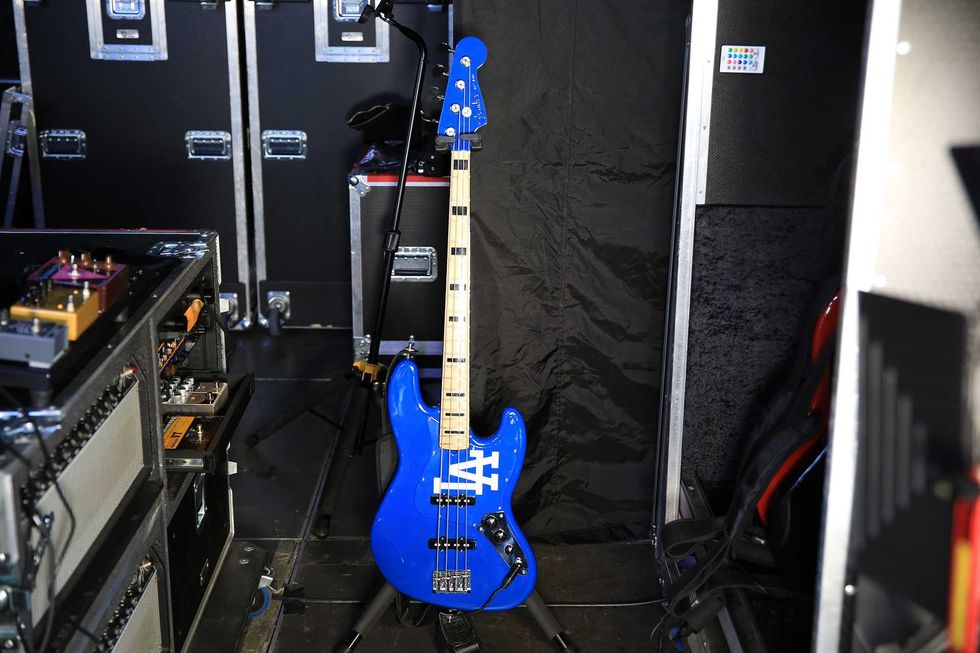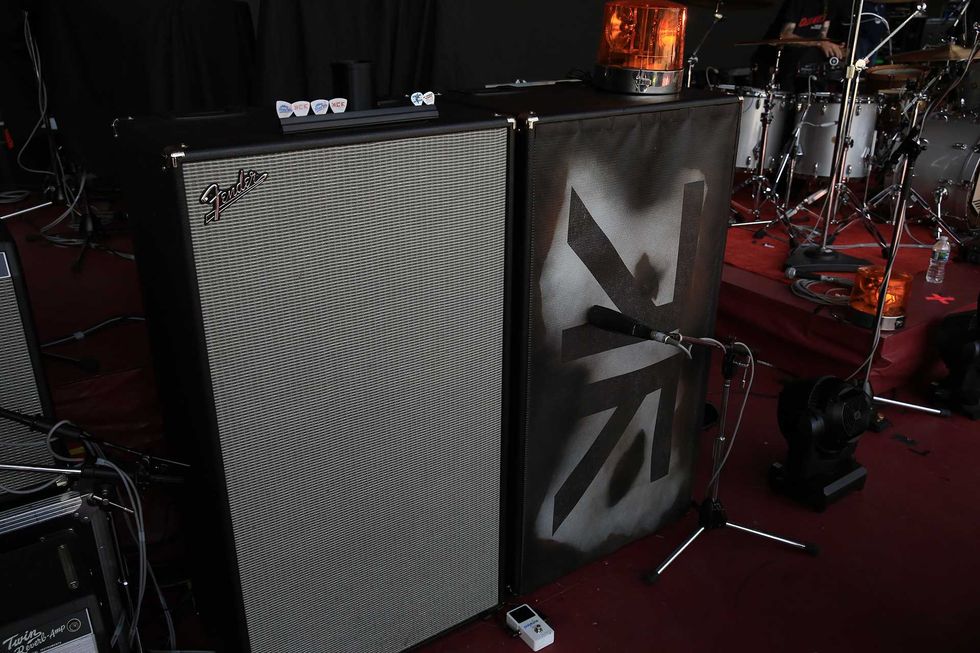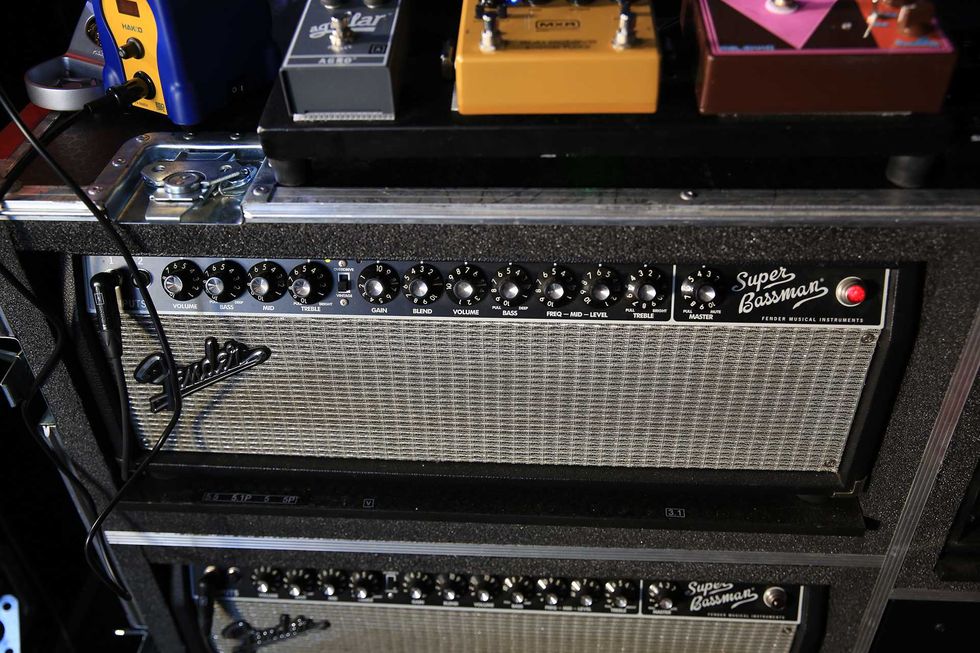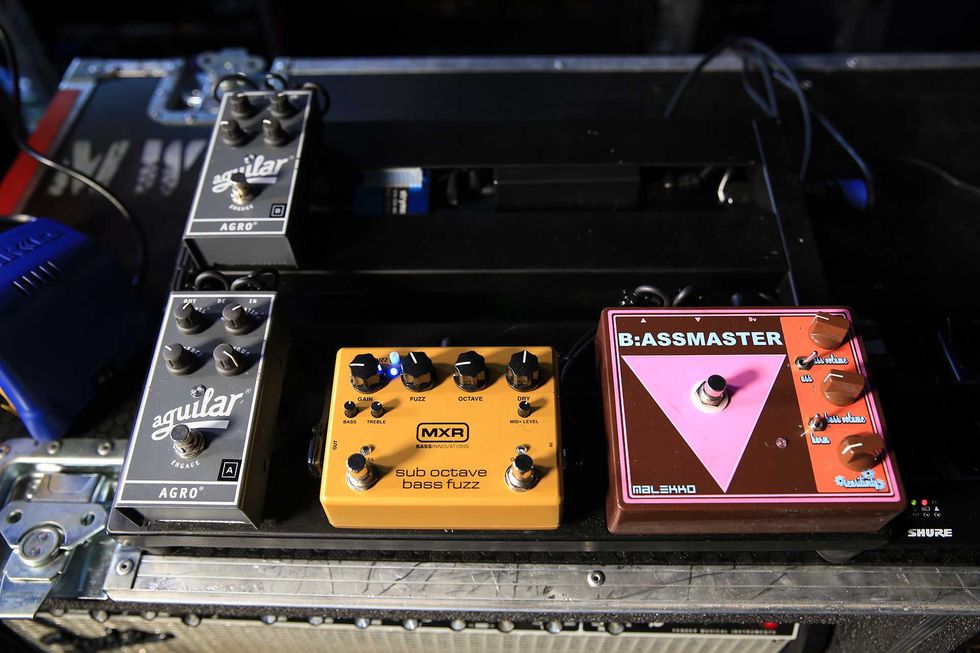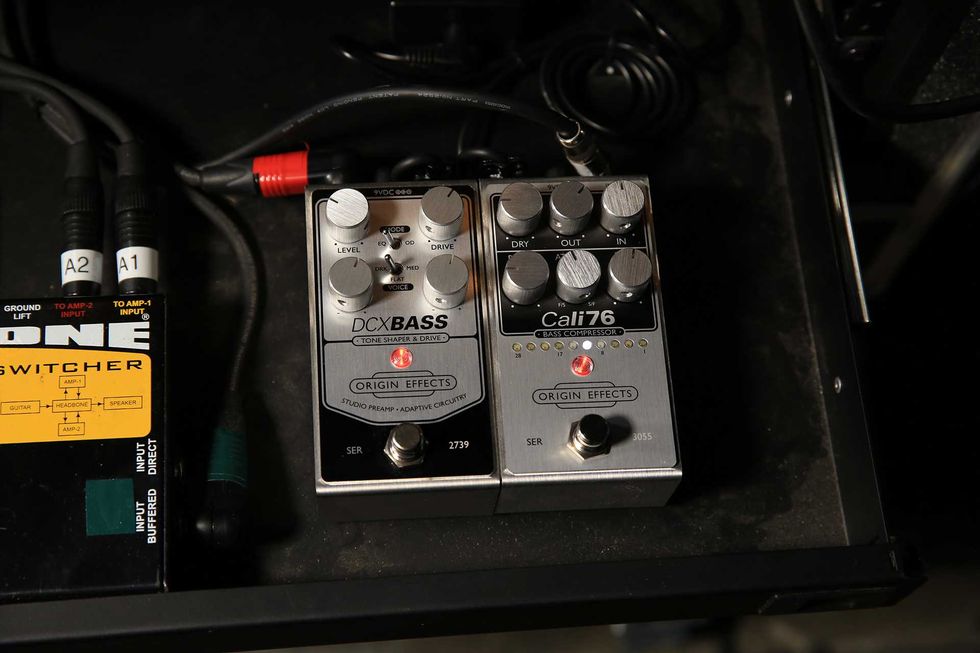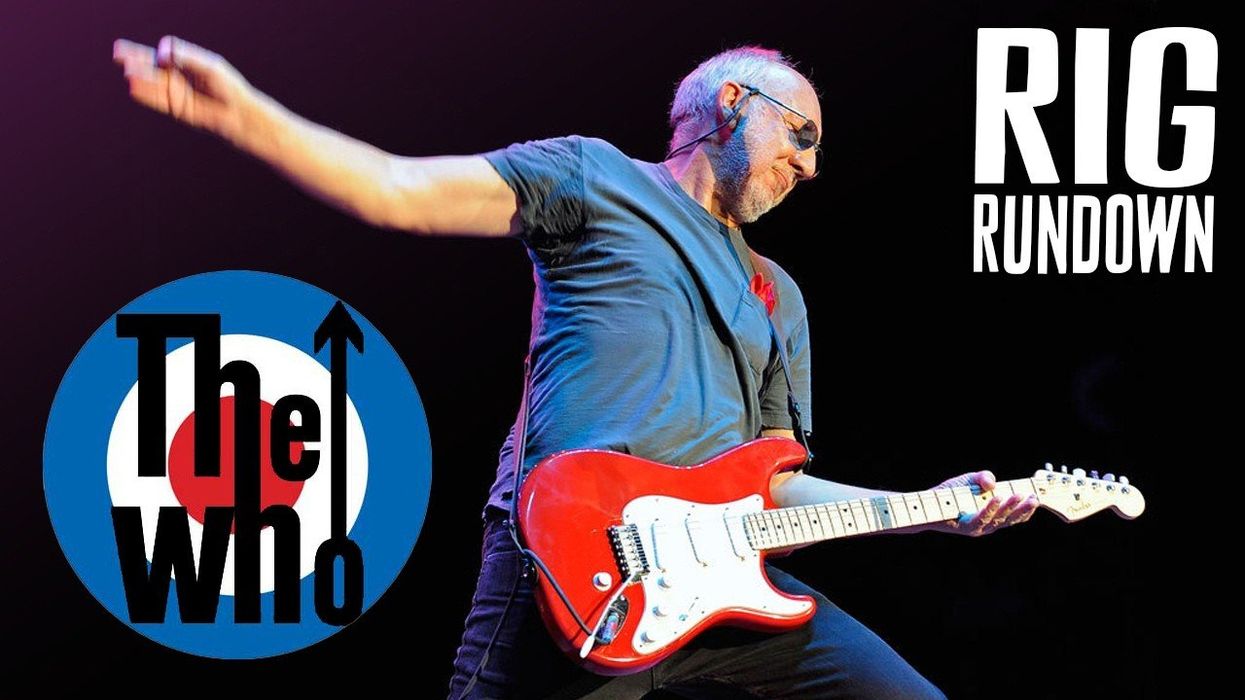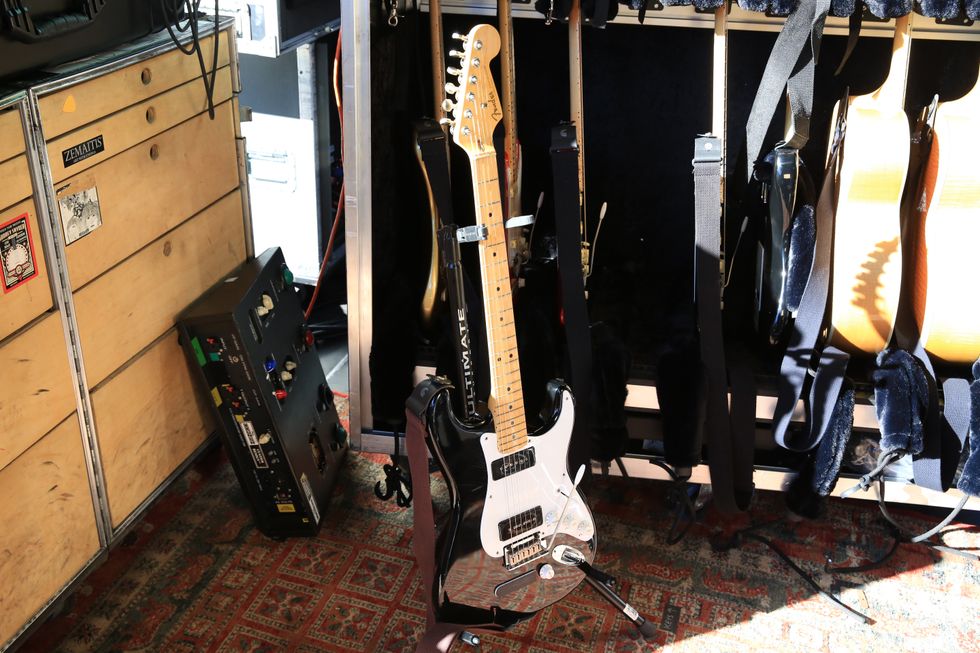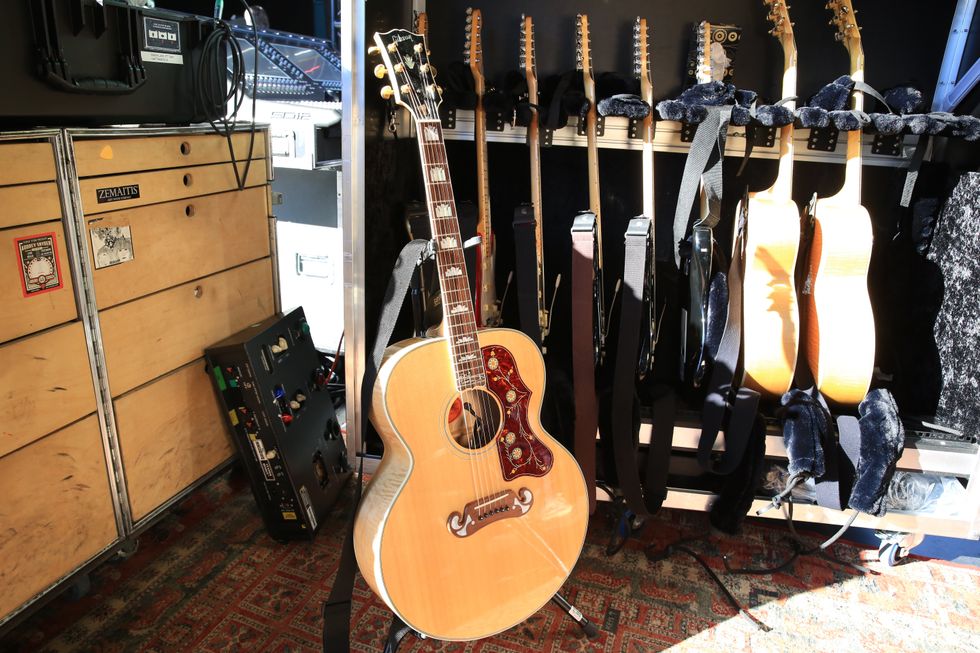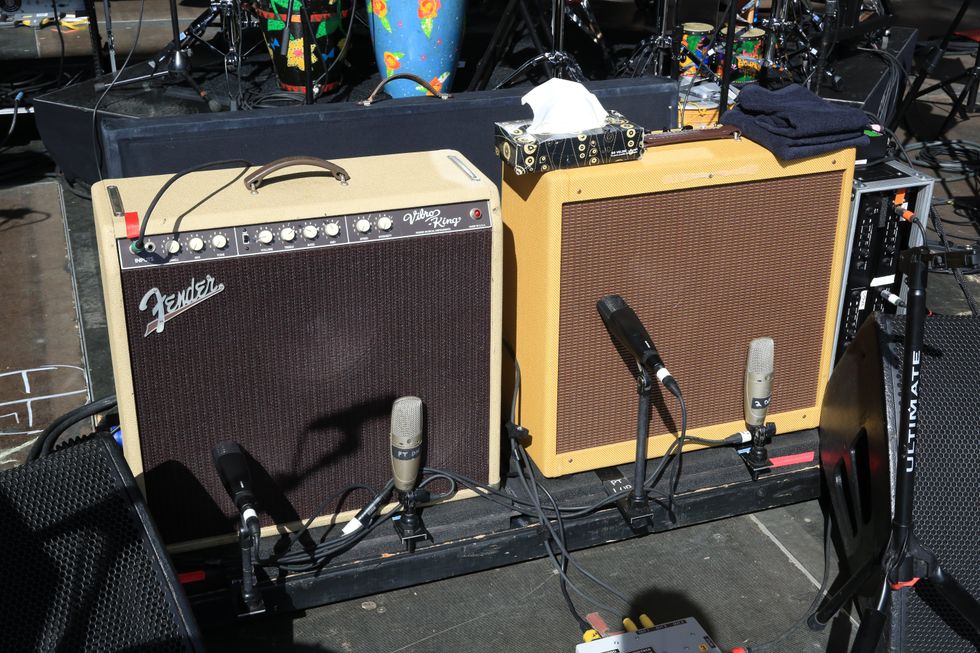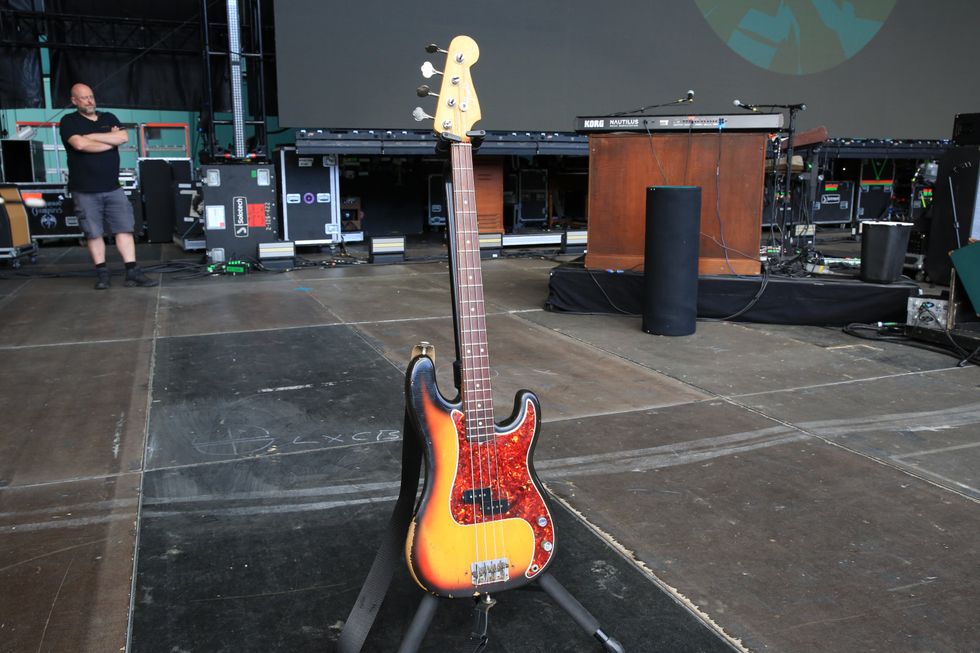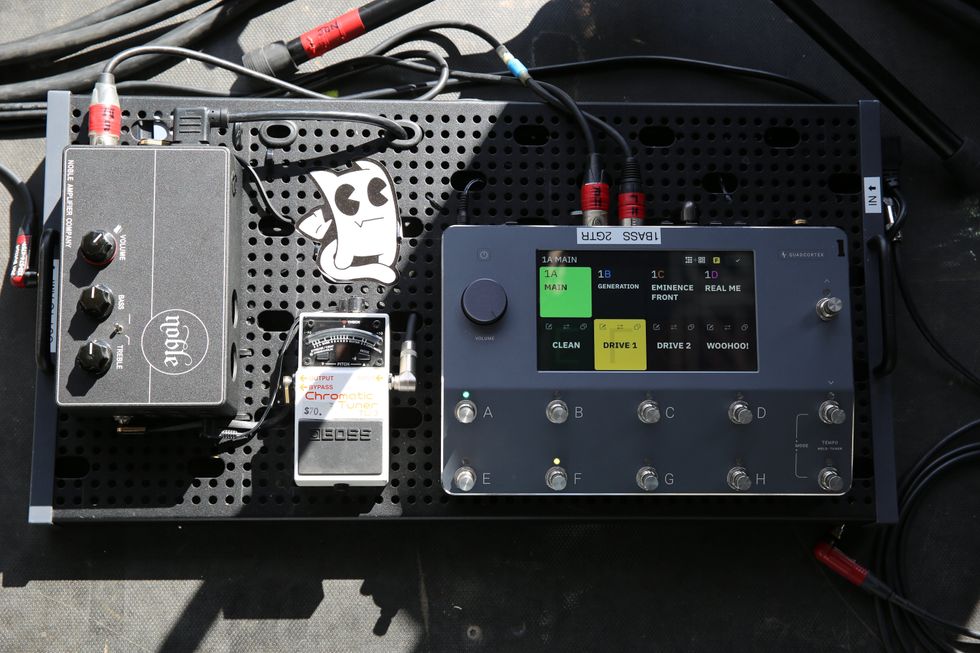See how a Tube Screamer and a pair of POGs mesh with badass bassist Bridget Kearney’s carved double bass. Plus, touring guitarist James Cornelison shows the oddball guitars and pickups he chose to funkify the band’s neo-soul dance parties.
College internships can run the gamut. They can lead you into a career or dissuade you from pursuing one altogether. In 2004, while still attending the New England Conservatory of Music in Boston, singer Rachael Price, bassist Bridget Kearney, founding guitarist Mike “McDuck” Olson, and drummer Mike Calabrese joined forces to perform as what they dubbed a “free country band,” where they intended to play country music in an improvised, avant-garde style. As it goes with many college-years experiments, it didn’t stick, but the fervid foursome pushed forward in continuing to develop their own sound. They quickly graduated to a bona fide band cultivating a buzz with infectious concerts, creative covers, and complex, groovy originals. Through their mutual influences and complimentary counterpoints, their sound matured into a harmonious fusion, as if Berry Gordy produced the Beatles in Nashville’s RCA Studio.
If starting a band and shaping their sound was an internship and bachelor’s degree, self-releasing records and organizing U.S. tours would be their master’s and doctorate. They self-released 2007’s In This Episode... and 2008’s Promises, Promises before joining Signature Sounds, who put out 2010’s Lake Street Dive and 2014’s Bad Self Portraits. (The latter slotted them on the Billboard charts—No. 18 in the 200 and No. 5 in Top Rock Albums.) They then signed to Nonesuch, where they’ve dropped three more albums—most notably 2016’s Side Pony, which put them atop the Top Rock Albums chart, while 2021’s Obviously netted them their highest single, with “Hypotheticals” hitting No. 2 on the Adult Alternative Airplay chart.
And while the band has continued to evolve, experiment, and expand their signature sound, they have kept to their core identity—having fun. They seem never to miss a Halloween dress-up show, and still aren’t gun-shy about covering classics and making them their own. Setlists are often littered with audience requests and reinterpretations of the Beatles, Hall & Oates, George Michael, Bonnie Raitt, Elvis, Shania Twain, the Pointer Sisters, the Jackson Five, the Kinks, Steely Dan, Annie Lennox, Sly & the Family Stone, and countless others.
The afternoon before their second consecutive sellout at Nashville’s Ryman Auditorium, Lake Street Dive’s Bridget Kearney and touring guitarist James Cornelison welcomed PG’s Chris Kies on stage for a casual gear chat. Kearney explained how she uses a pair of octave pedals through her standup double bass, and what she’s doing with four tuners! Plus, she explains what restarted her slow-burn courtship with electric bass. Then, Cornelison walks us through his setup, which includes leftover pieces from retired guitarist Mike “McDuck” Olson and a ratty pickup bought off a former PG staffer. It both honors the band’s catalog and carves his own musical fingerprint.
Brought to you by D’Addario Nexxus 360 Tuner.
All About That Bass
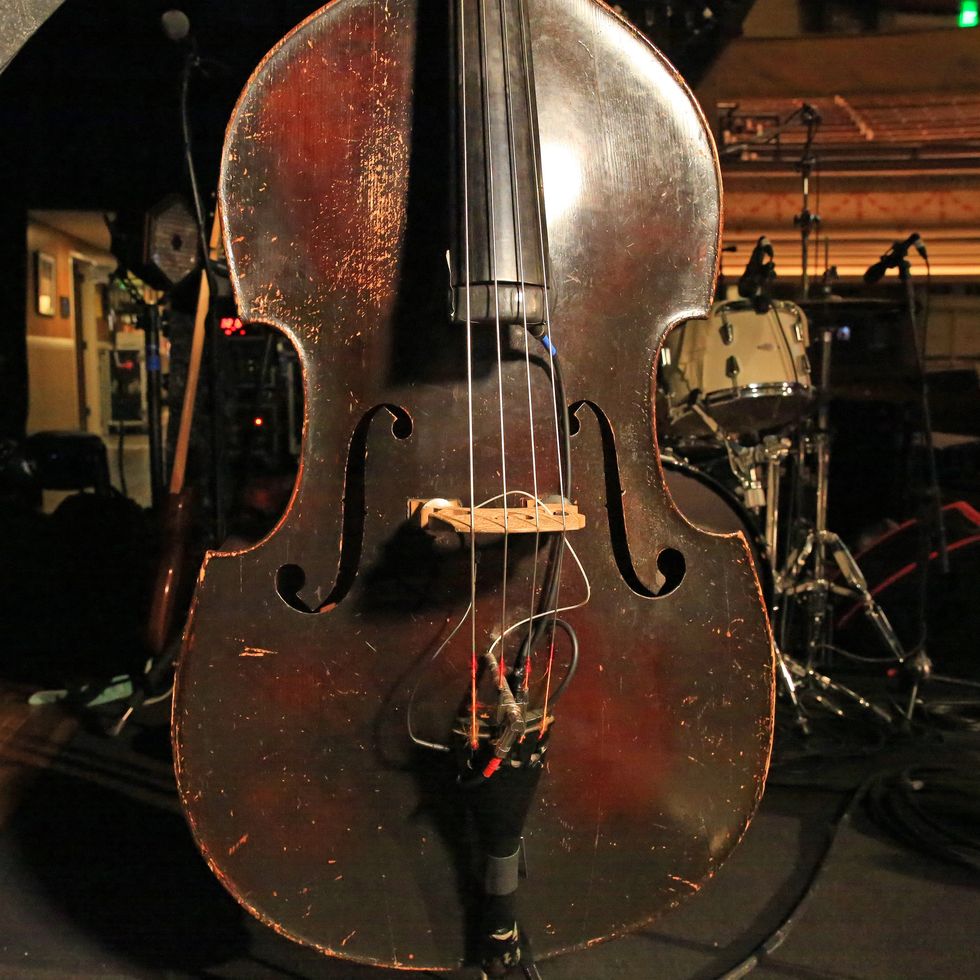
Bridget Kearney is known for almost exclusively using a standup double bass on stage and in the studio with Lake Street Dive. (As you’ll see in a minute, she’s fostering her connection with electric bass.) She’s been thumping on this one since LSD took shape. She acquired the 50-year-old carved double bass (all solid-wood construction) from fellow bass player and friend Ben Davis. When she received it from Davis, he had already added a David Gage Realist LifeLine pickup, but she’s opted to add and amplify via a Fishman Full Circle Upright Bass Pickup (“the heart of the tone”) and a Pierre Josephs String Charger magnetic transducer (“helpful getting extra juice to cut through when playing with a full band”). The Fishman provides a pure, clean signal to FOH, while the String Charger handles all the effects Kearney puts on her instrument. It’s been years since she’s changed strings, but she thinks they’re D’Addario Helicore Orchestral bass strings.
Playing Paul
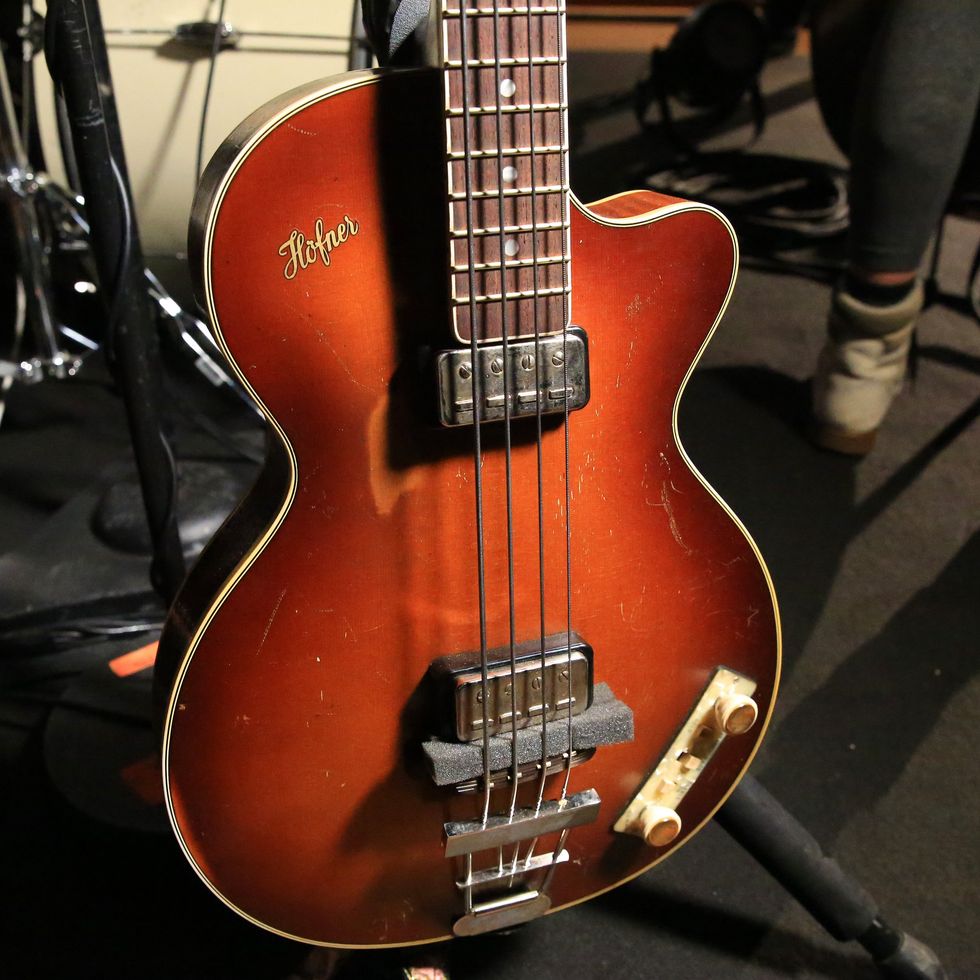
In Brooklyn for Halloween 2020, Lake Street Dive recreated the iconic Beatles rooftop concert. In doing so, the entire band doubled down to look the part (wigs, sideburns, and shaggy coats included). To be as authentic as possible, Kearney borrowed a friend’s Höfner for the performance. She enjoyed the playing experience and wanted to further investigate the electric bass, then bought this Höfner Limited Edition H500/2-RLC-O Club Bass. “Before this, I hadn’t played electric bass for nearly 20 years. It took me to the age of 35 to think, ‘I wonder if electric bass could be a cool thing?’ Höfner and that rooftop concert was my gateway drug back to solidbody electric basses.”
New Friend
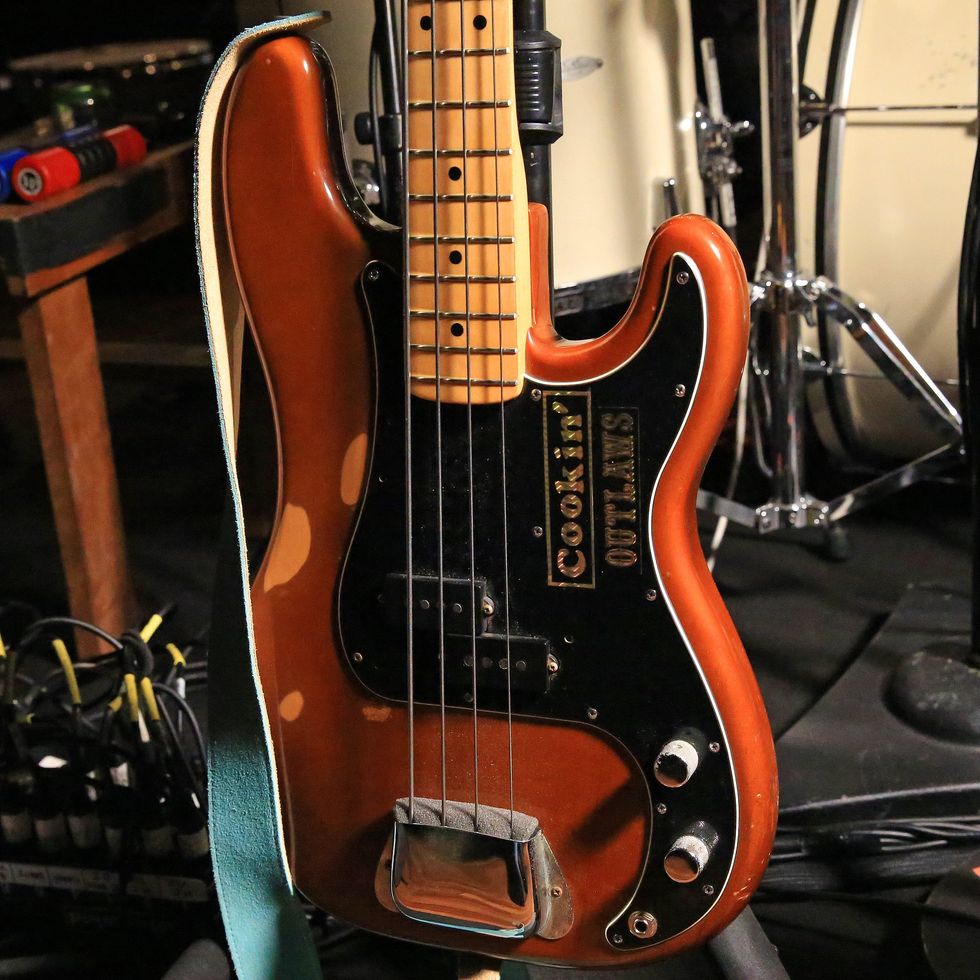
Kearney landed this brown beauty just a few months ago while instrument-shopping in Seattle. She had saw this 1975 Fender P bass on a store’s online inventory, but Bridget realized after arriving that she had went to the wrong store. However, the “wrong” store had a 1969 P she couldn’t pass up. Even after buying a vintage gem, months later, the above ’75 was still haunting her. So, the next time she visited Seattle, Kearney went to the “right” store and made the purchase. She hasn’t used it in the studio yet, but during this run of shows, she brought it for the band’s cover of “Love Doctor” from her 2017 solo record Won’t Let You Down. (The Cookin’ Outlaws stickers were put on prior to the score, and Bridget notes they are a part of the instrument’s charm.)
Bridget Kearney’s Pedalboard
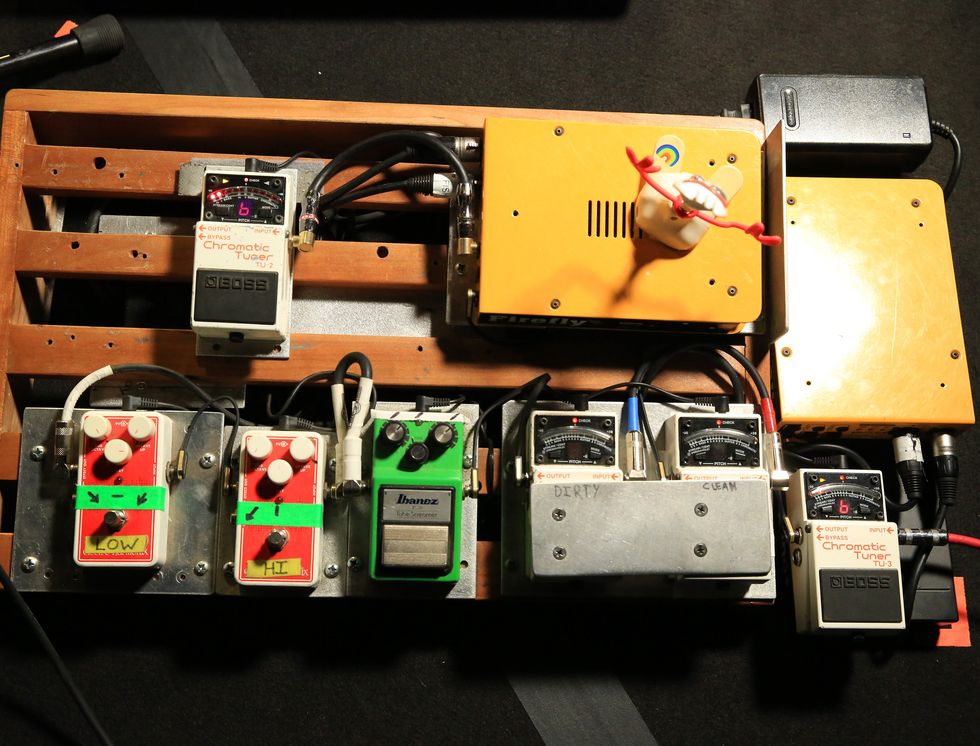
“My pedalboard is a little bit ridiculous. It’s composed of four Boss tuners [laughs],” concedes Kearney. Unraveling the 4-tuner conundrum, she explains that she uses a pair of TU-3s for each pickup on her standup bass. The ingenious silver plate allows her to mute both signals with one kick. A passive TU-2 stays on all the time to help her play the fretless standup as close to in tune as possible. And the fourth Boss tuner is for her electric basses. Her duo of Electro-Harmonix Micro POGs each have a specific duty—one goes low (for “Good Kisser”), and one goes high (for solos and melodic lines). An Ibanez TS9 Tube Screamer adds some sting to the double bass for “Bobby Tanqueray” and other parts. A couple of Radial Firefly Tube Direct Boxes send all her bass signals to FOH.
Gather ’Round This Gibson
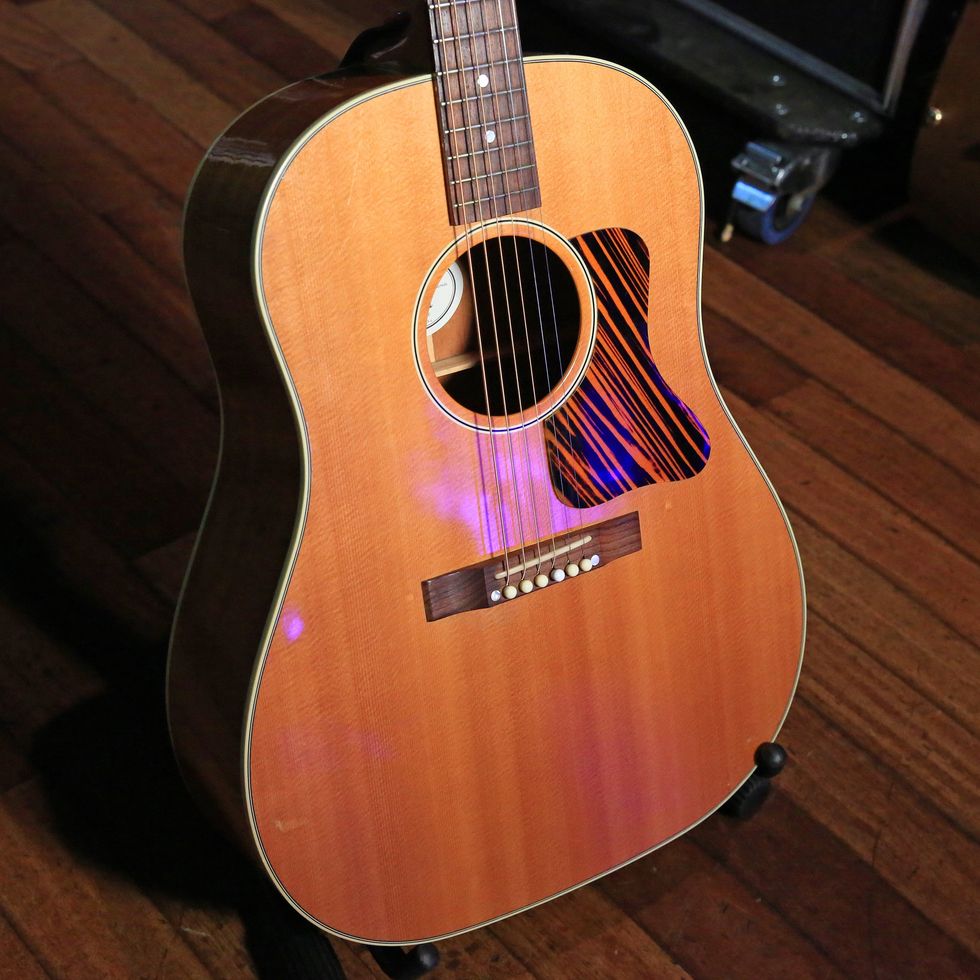
For this batch of shows under the Gather Round Sounds Tour umbrella, LSD revamped their catalog for stripped-down, alternative arrangements. This is how they described the tour on social media: “Join us for these easy going, semi-acoustic evenings full of the fan favs, some deep cuts, and maybe even some works in progress in our most relaxed, basement couch setting yet.” Accommodating those cozy cabin vibes, guitarist James Cornelison brought along this 2010s Gibson J-35 reissue.
Cowboy Chords
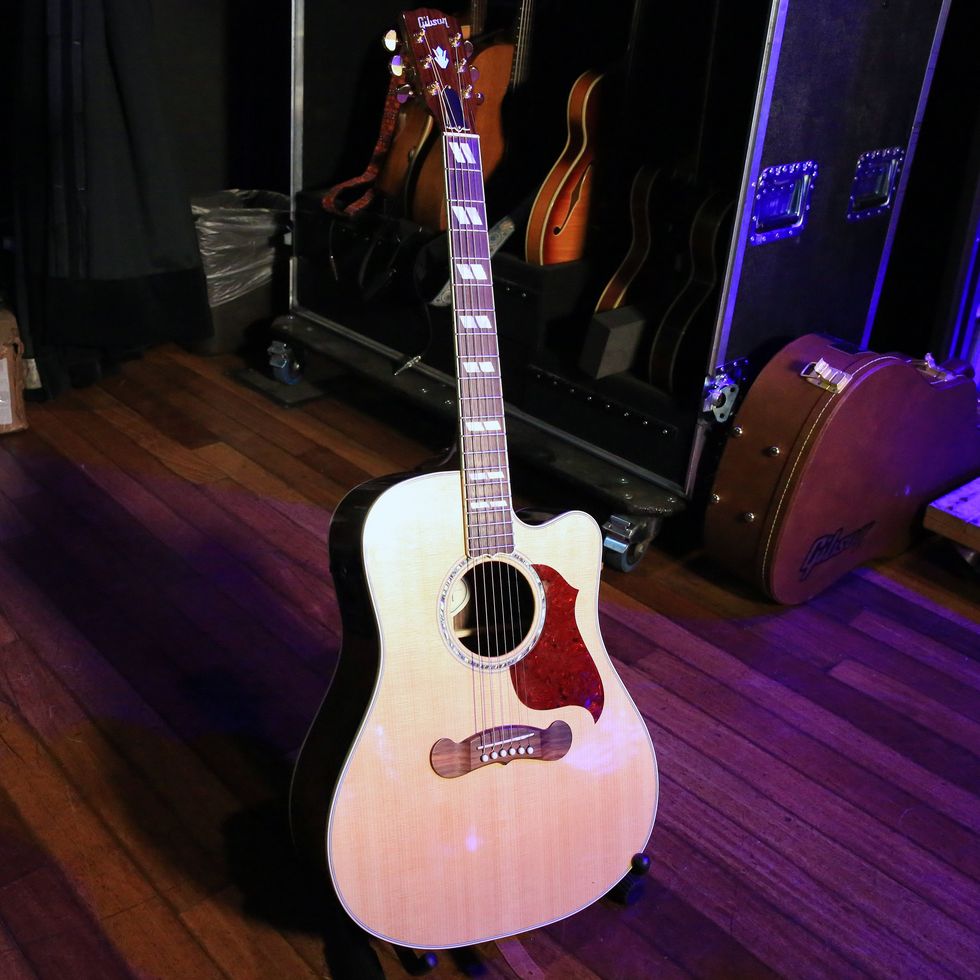
When the band reaches maximum campfire camaraderie, they perform as a guitar trio. In that arrangement, drummer/percussionist Mike Calabrase uses this Gibson Songwriter Standard EC Rosewood acoustic-electric.
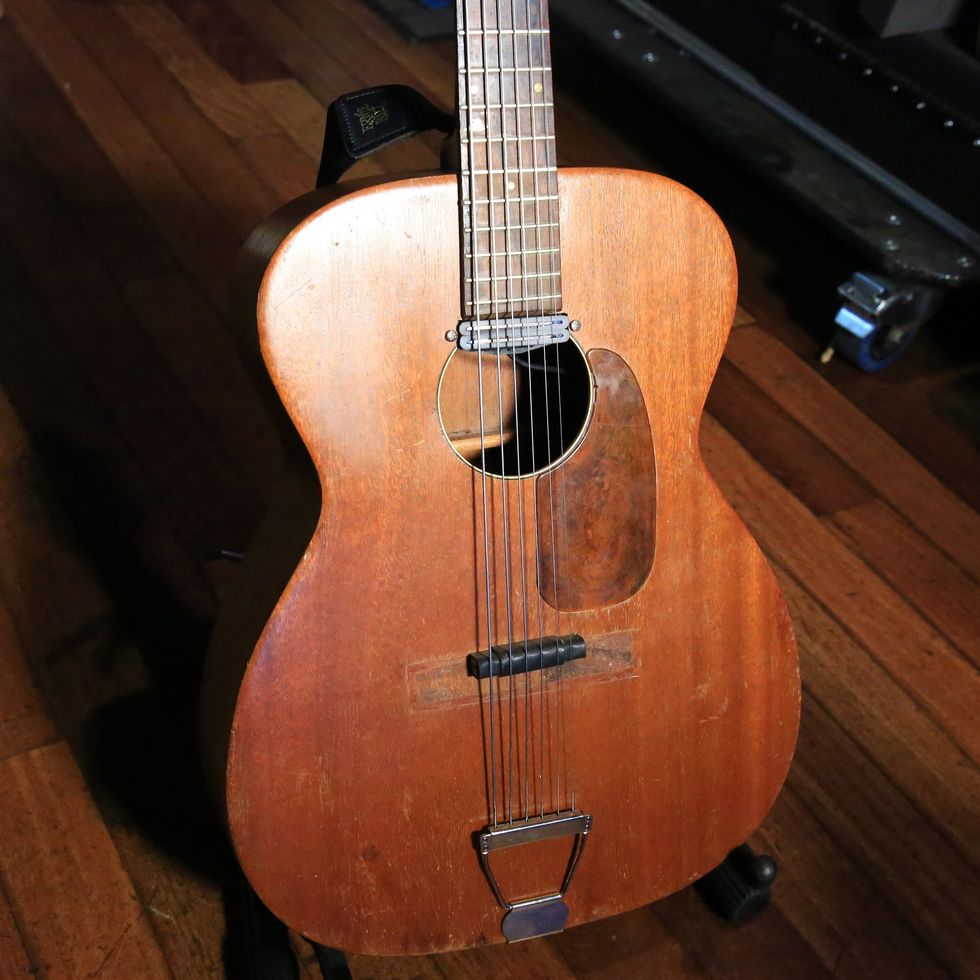
This late-’60s Harmony H165 is singing better than ever, thanks to the facelift handed out by Old Style Guitar Shop in L.A. Aside from bracing upgrades and a proper setup, it’s been given two pickups (a piezo) and what looks like (but is unconfirmed) a variation of Seymour Duncan’s Hot Rails. When asked during the Rundown, James was unsure but did note that Old Style uses this pickup on all their acoustic overhauls. You’ll also notice a rubber bridge giving this storyteller even more vibe.
Roommate Robbery
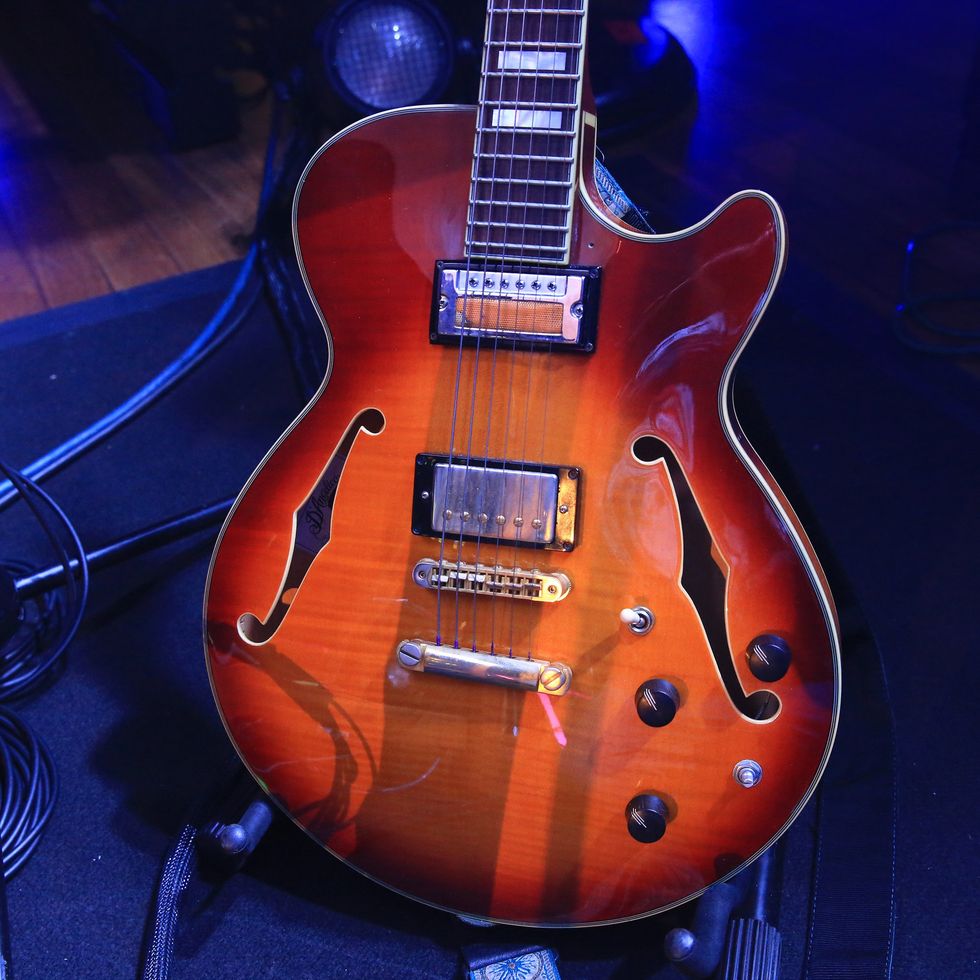
Cornelison’s roommate received this Excel SS from D’Angelico, but James gravitated more towards the instrument, so it unofficially became his. (What a friend!) Since adopting the 6-string, he’s designated it as his “Frankenstein project” as he’s tried several experiments on it—using flatwounds, playing in open tunings, and replacing the stock neck humbucker with an old Teisco gold-foil pickup. It currently is the slide guitar for LSD material and stays in high-tension F-tuning for “Hush Money” off 2021’s Obviously.
We’re Not Worthy!
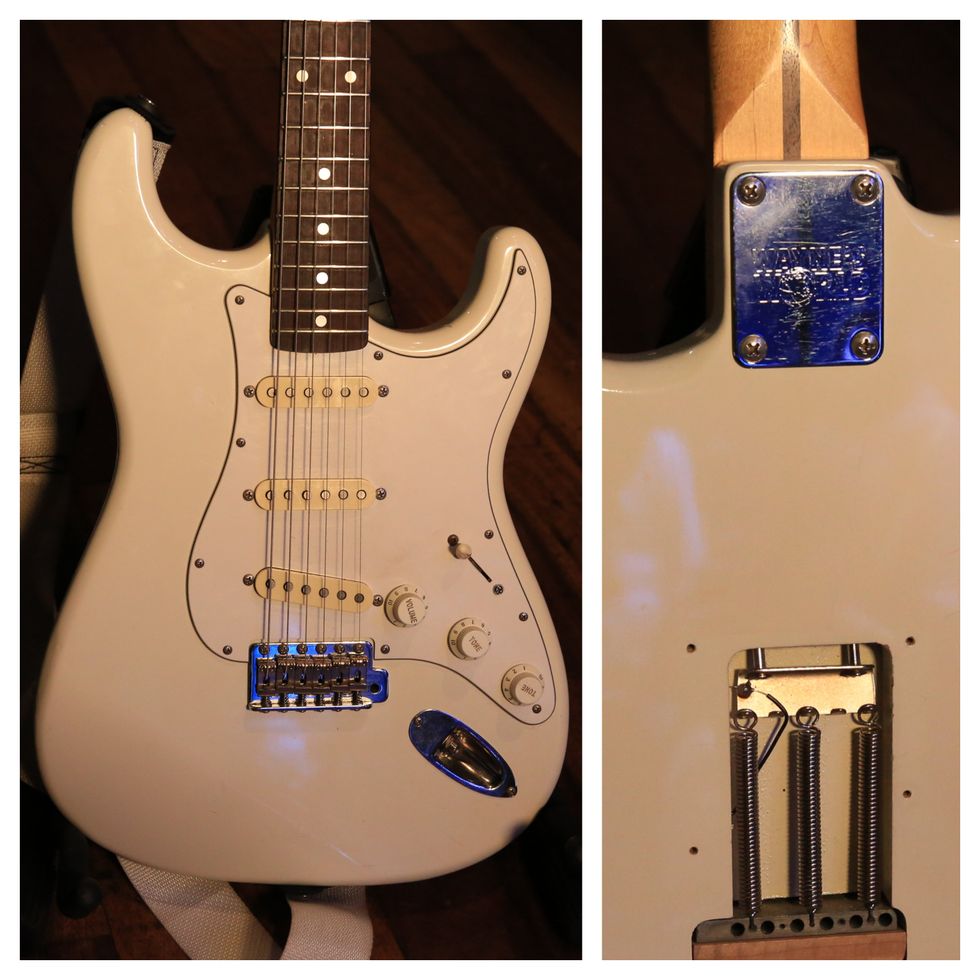
Single-coil sweetness is provided by this ’90s Squier Wayne’s World Stratocaster. (As you would assume, “Stairway” is not allowed on this Strat—denied!)
Big Ups to Big Thief
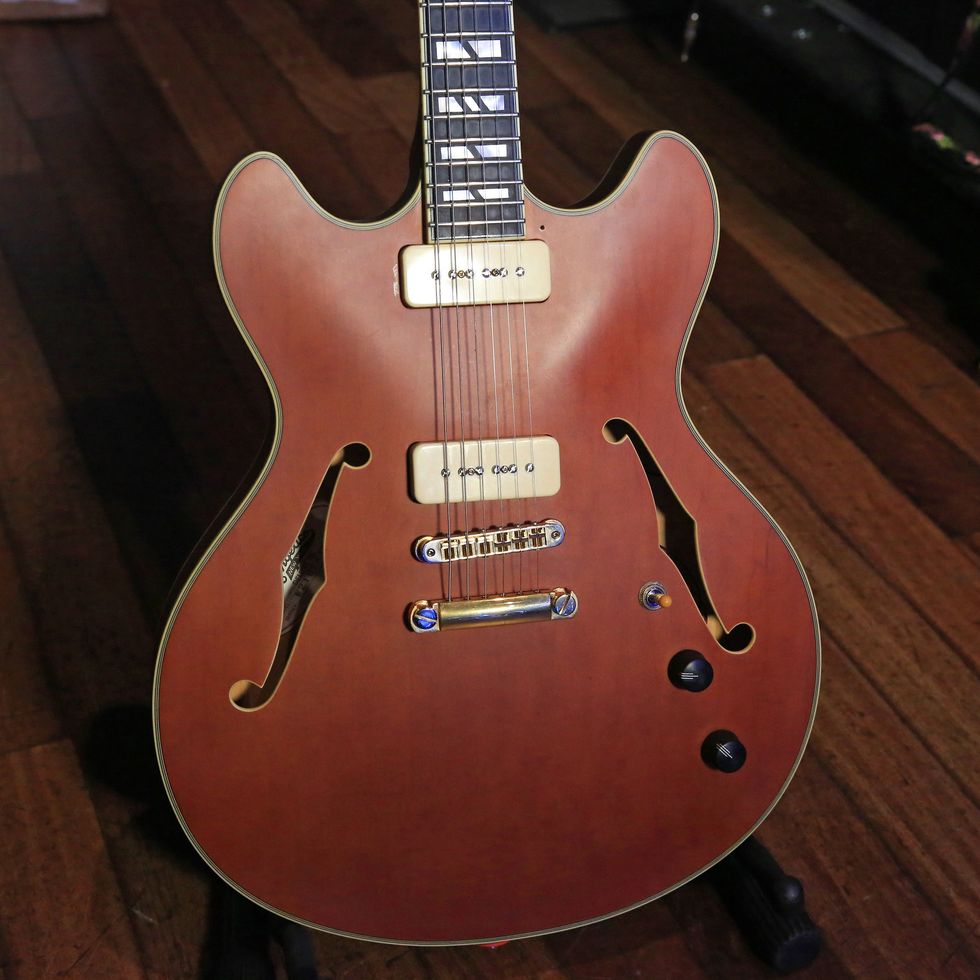
“I’m a big fan of Adrianne Lenker and I always enjoyed that she played semi-hollow guitars with P-90s in it. I thought it was cool to have the reversal of the hollowbody archetype with P-90s instead of humbuckers,” admits Cornelison. This D’Angelico Deluxe DC features a set of Seymour Duncan STK-P1 Stacked P-90s and is serial #3.
Grandfathered Gibson
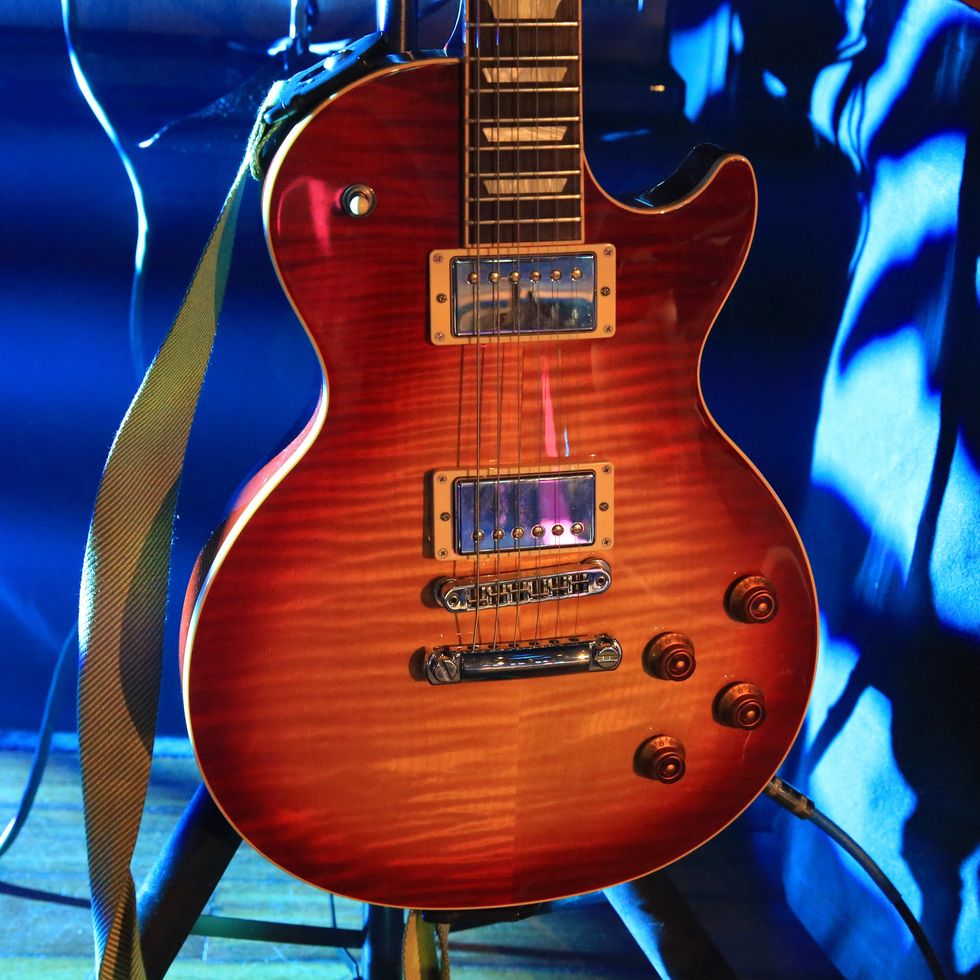
Original guitarist and cofounding member Mike “McDuck” Olson left this ’50s Les Paul Standard (finished in Heritage Cherry Sunburst) for Cornelison to use in his absence. James remarks that this electric does the bulk of the work when the full band is represented.
Twinkly Twilighter
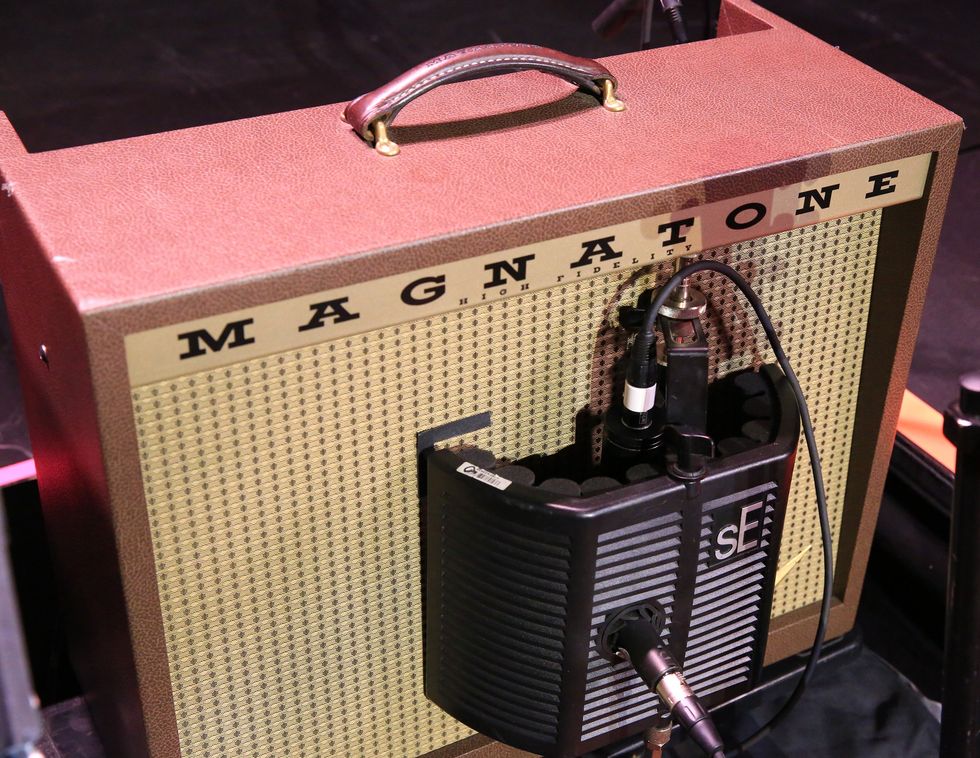
On this subdued set, Cornelison plugged all his electrics into the above Magnatone Twilighter 112 combo.
James Cornelison's Pedalboard
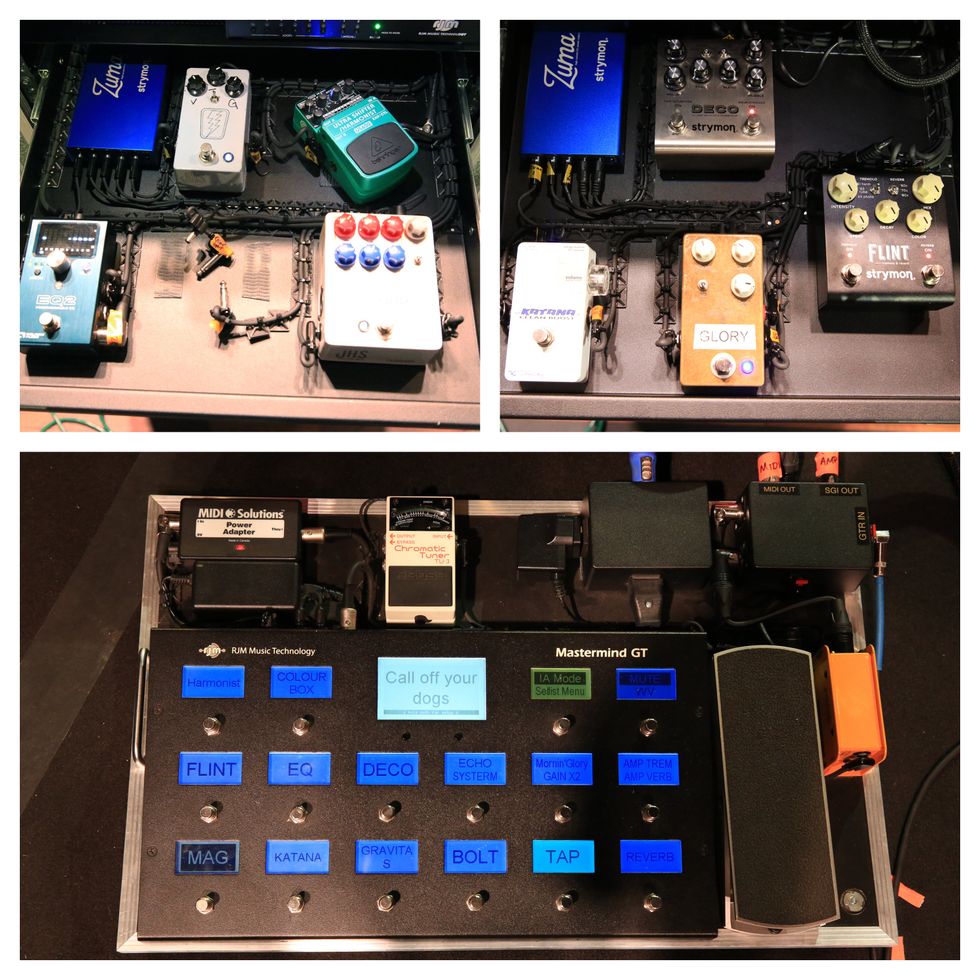
This dialed-in setup was designed and built by longtime Jason Isbell tech Michael Bethancourt. Cornelison has onstage control of everything via the RJM Mastermind GT. Also, out front is a Boss TU-3 Chromatic Tuner and an Ernie Ball VP Jr volume pedal. His two-drawer rack holds the following pedals: a Source Audio EQ2 Programmable Equalizer, a JHS SuperBolt V2, a Behringer US600 Ultra Shifter/Harmonist, a JHS Colour Box V2, a Keeley Katana Clean Boost, JHS Morning Glory, and a Strymon Flint & Deco. Everything is powered by a pair of Strymon Zuma units. Additionally, an RJM Mini Effect Gizmo MIDI controller helps organize the signal paths.




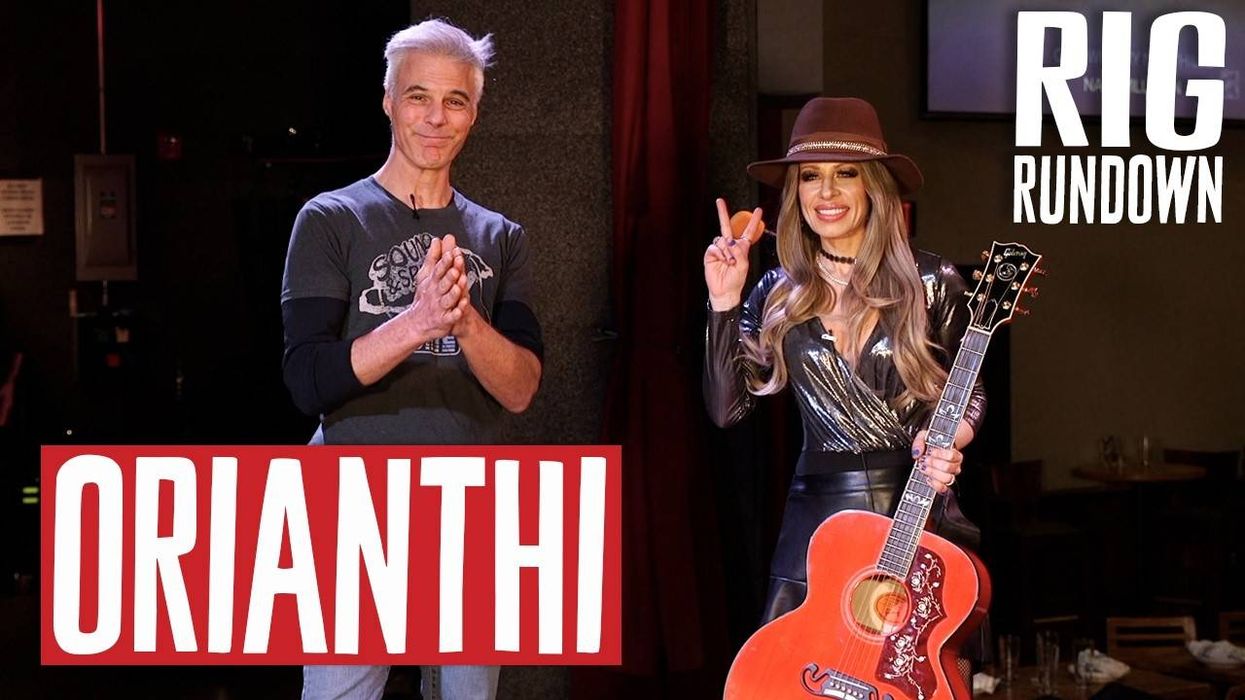
![Rig Rundown: AFI [2025]](https://www.premierguitar.com/media-library/youtube.jpg?id=62064741&width=1245&height=700&quality=70&coordinates=0%2C0%2C0%2C0)

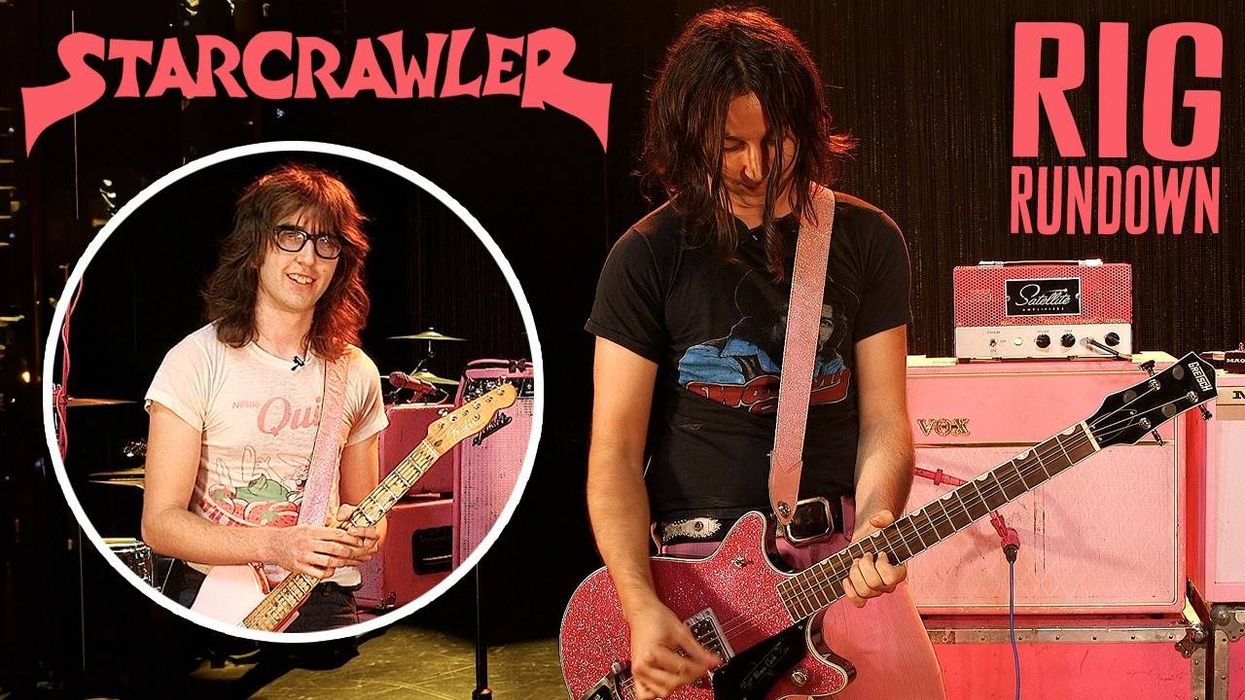
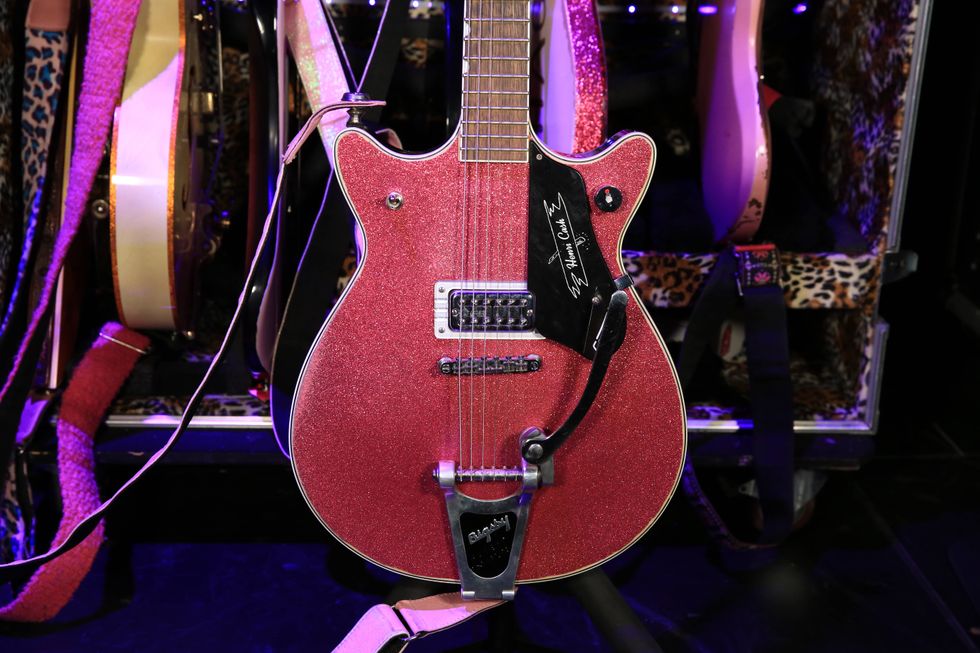
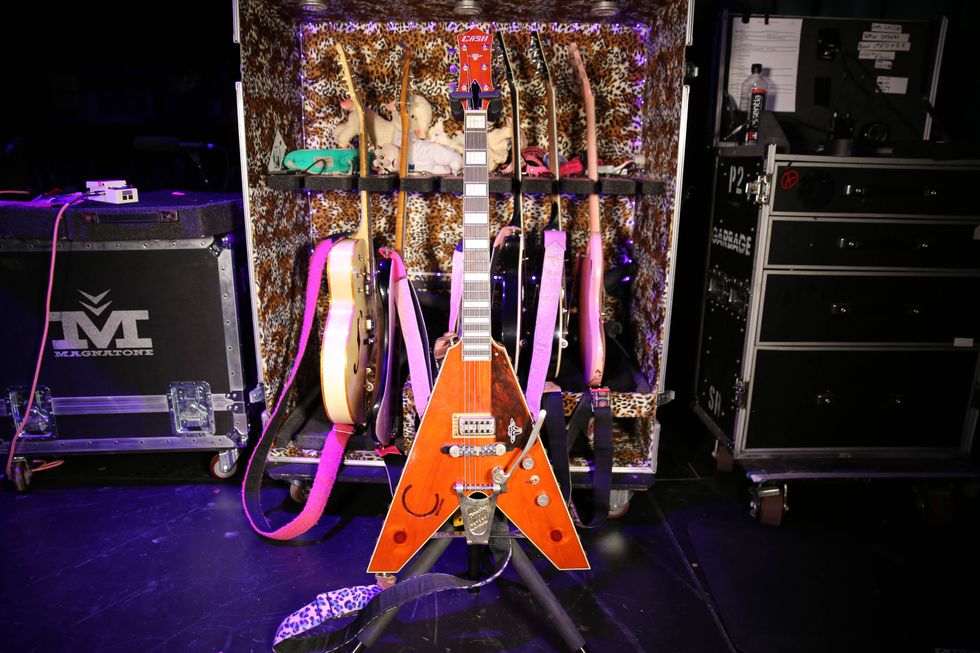
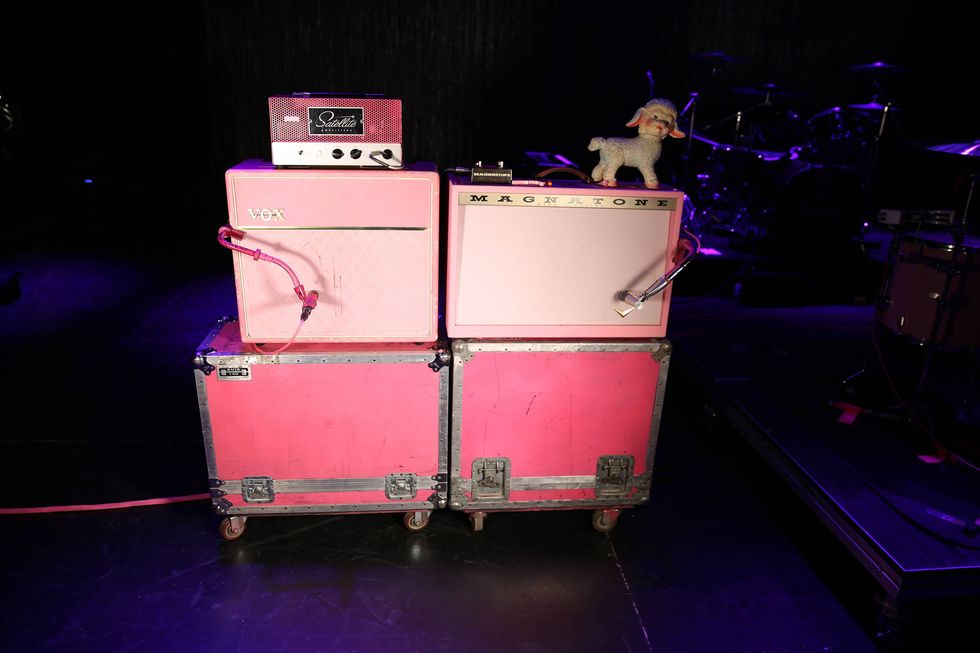
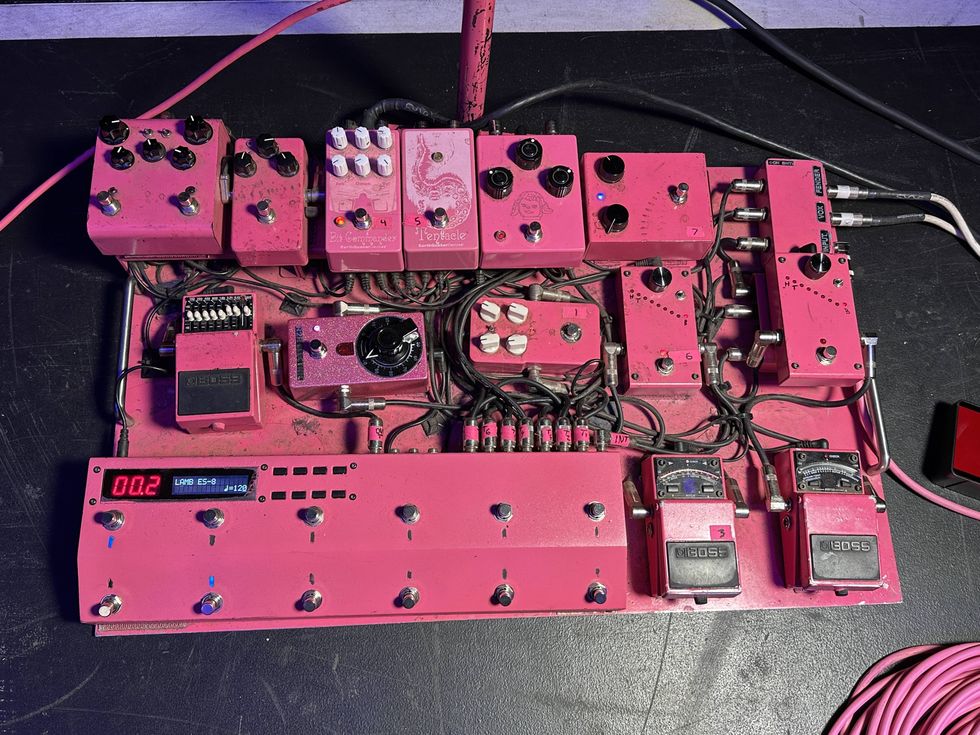
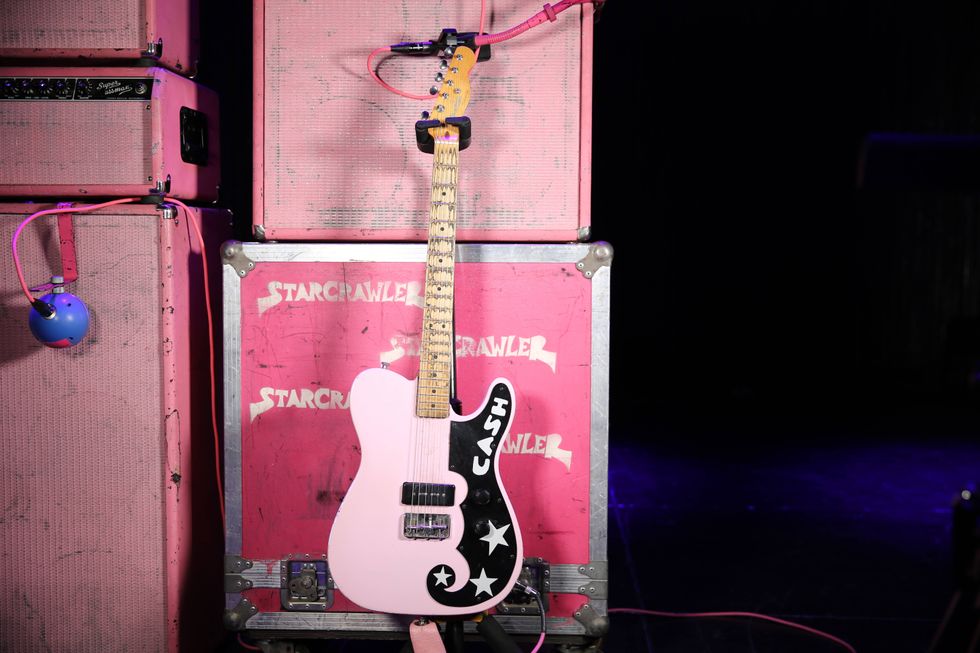
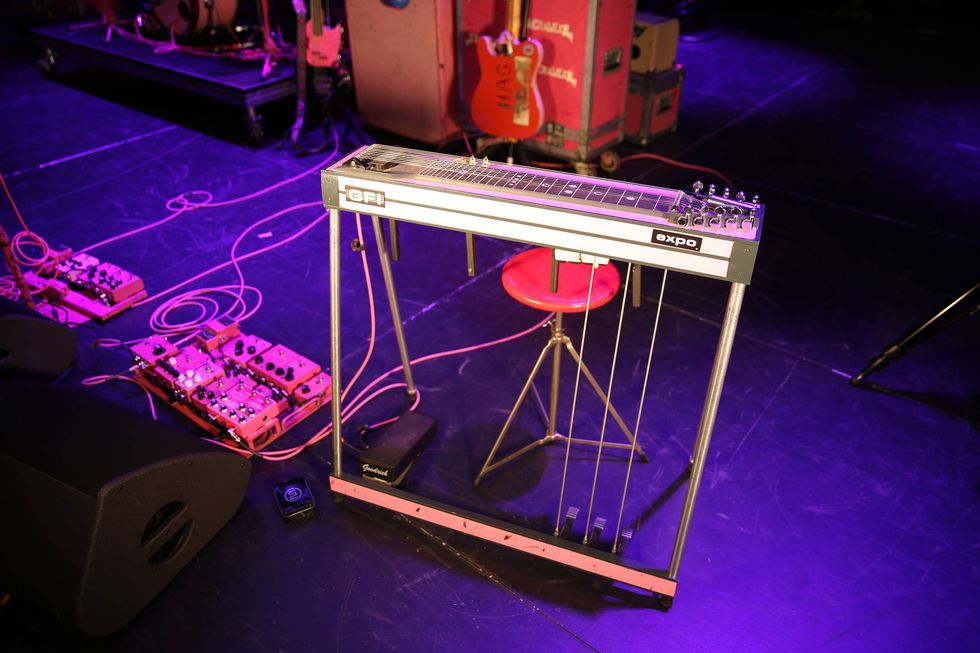
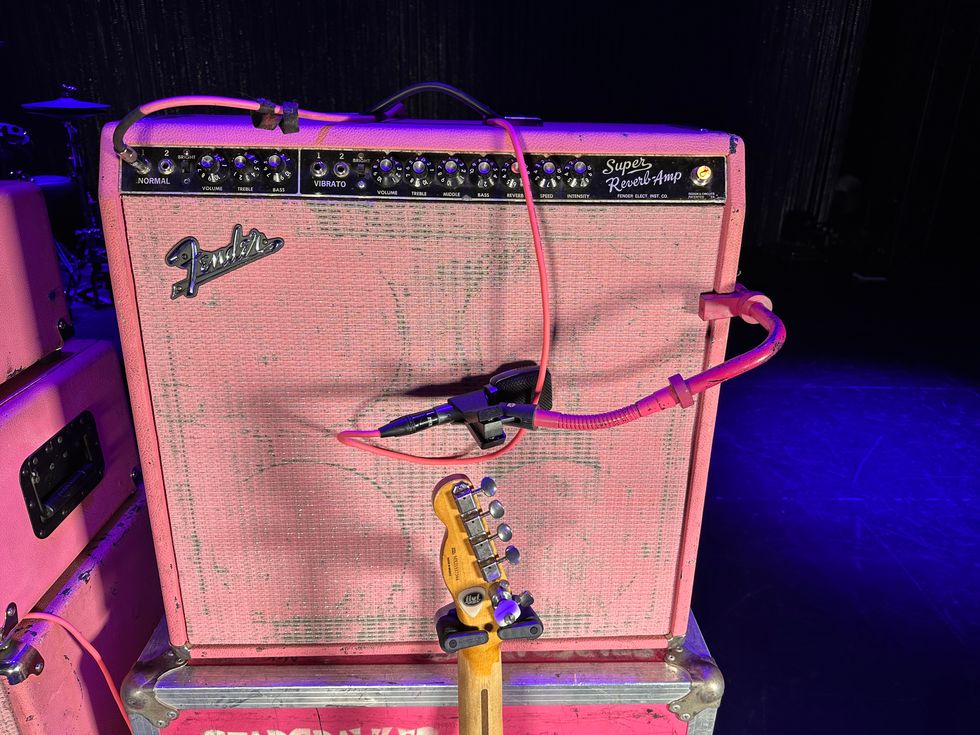
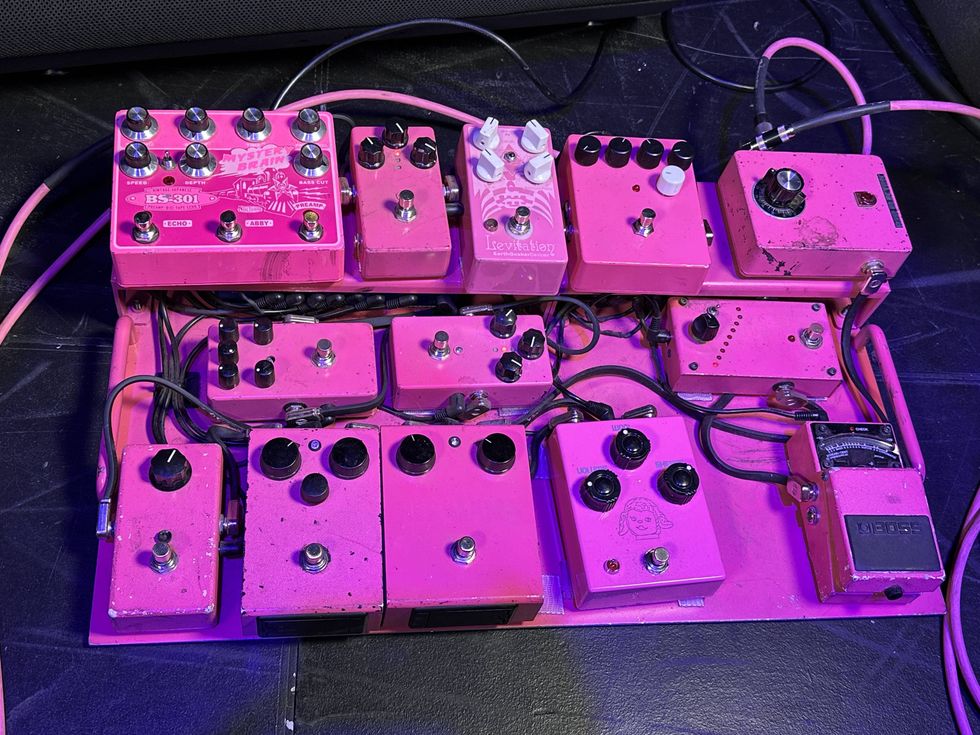

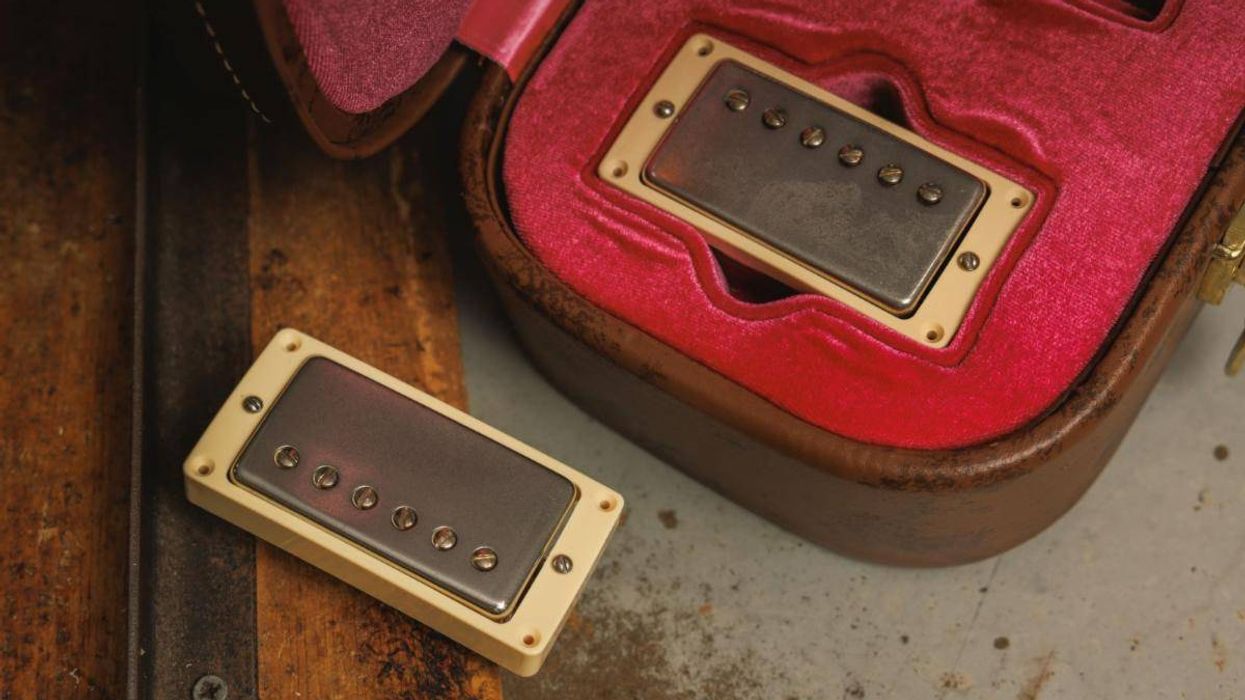
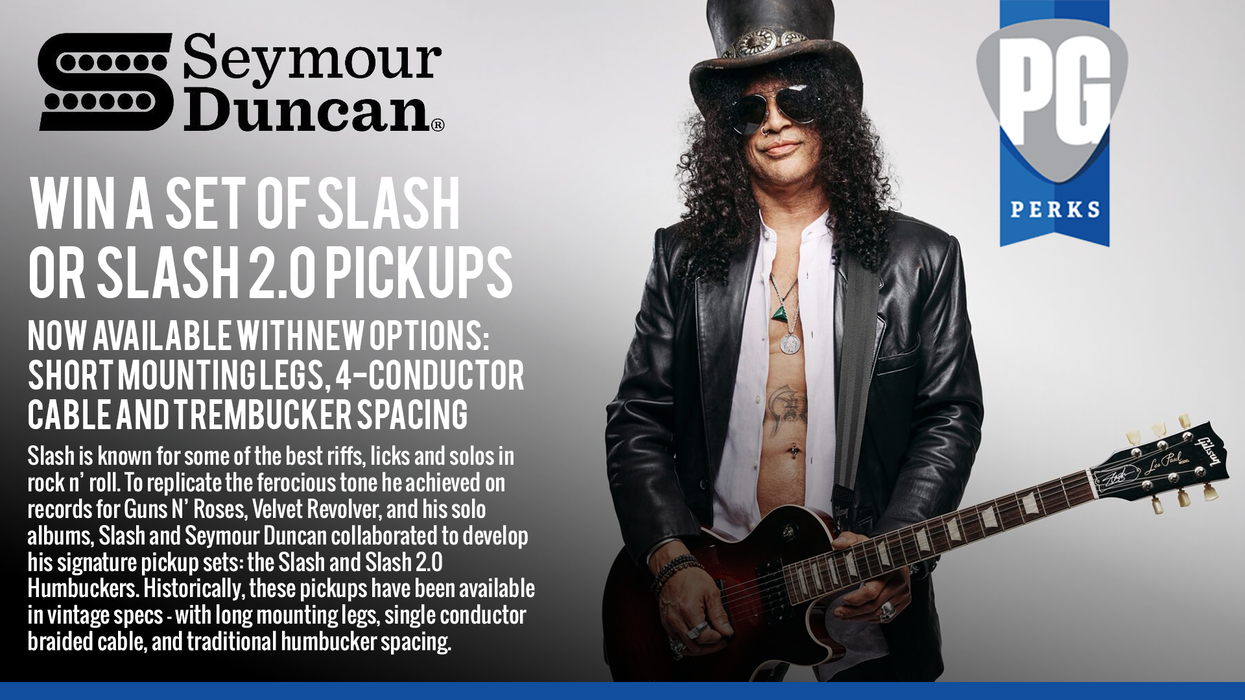

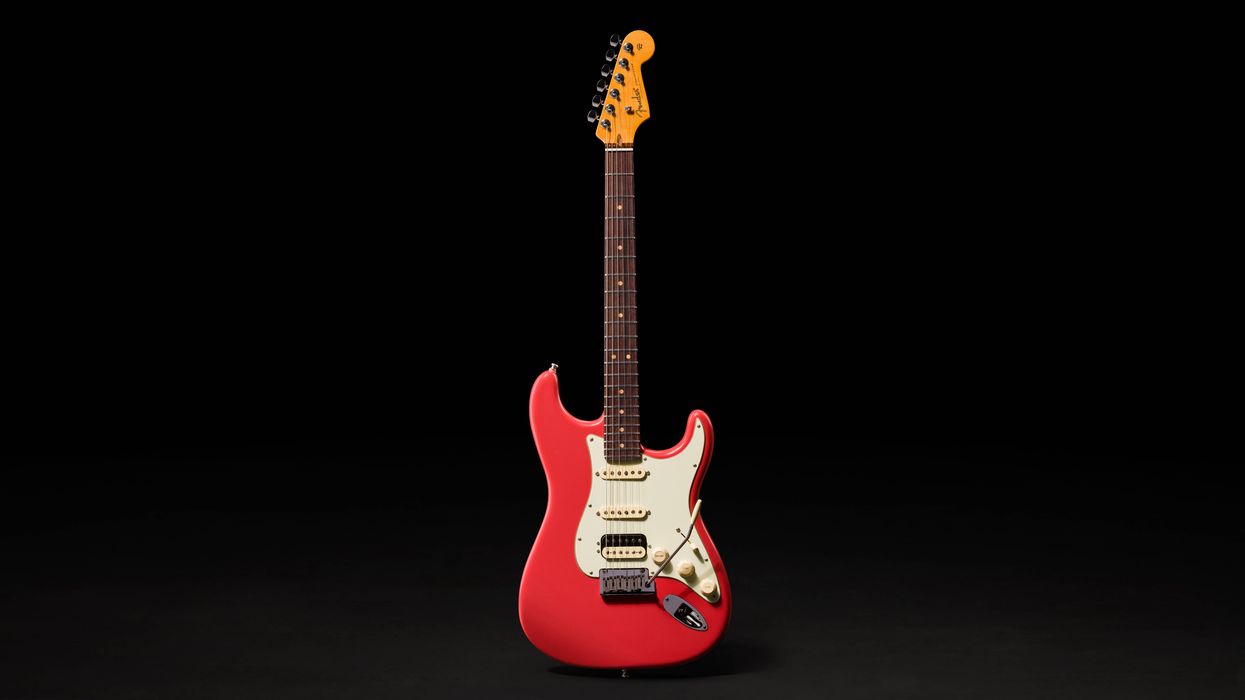

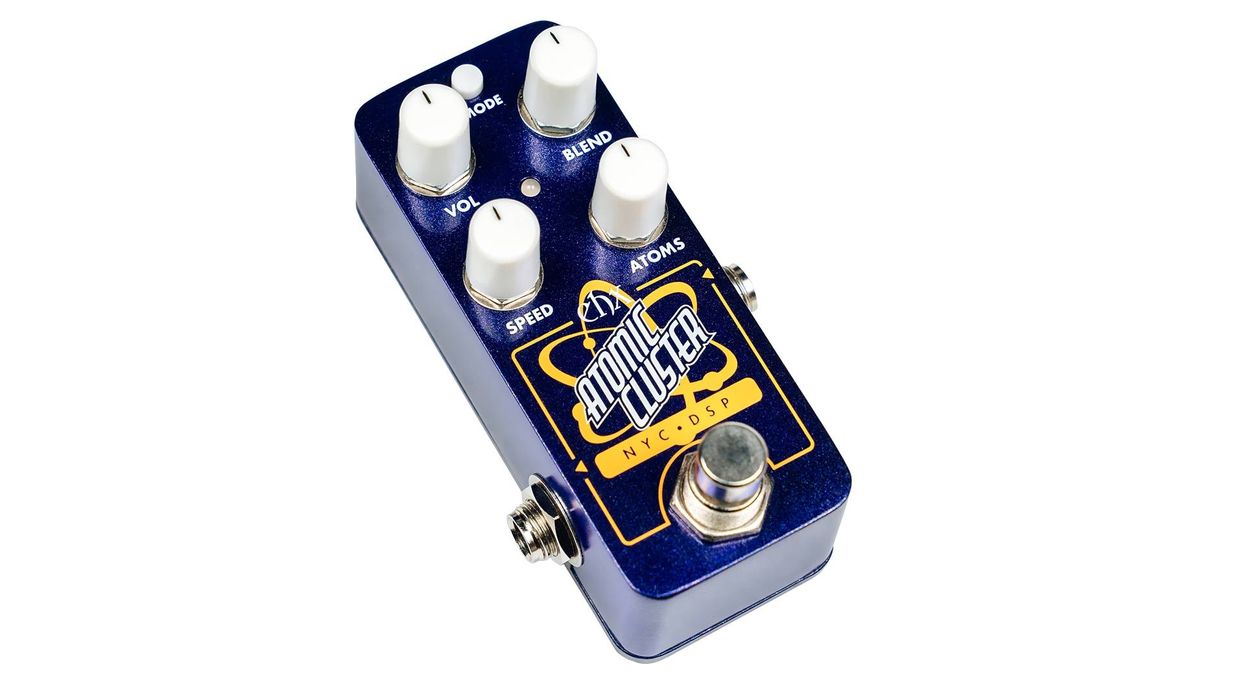
![Devon Eisenbarger [Katy Perry] Rig Rundown](https://www.premierguitar.com/media-library/youtube.jpg?id=61774583&width=1245&height=700&quality=70&coordinates=0%2C0%2C0%2C0)
